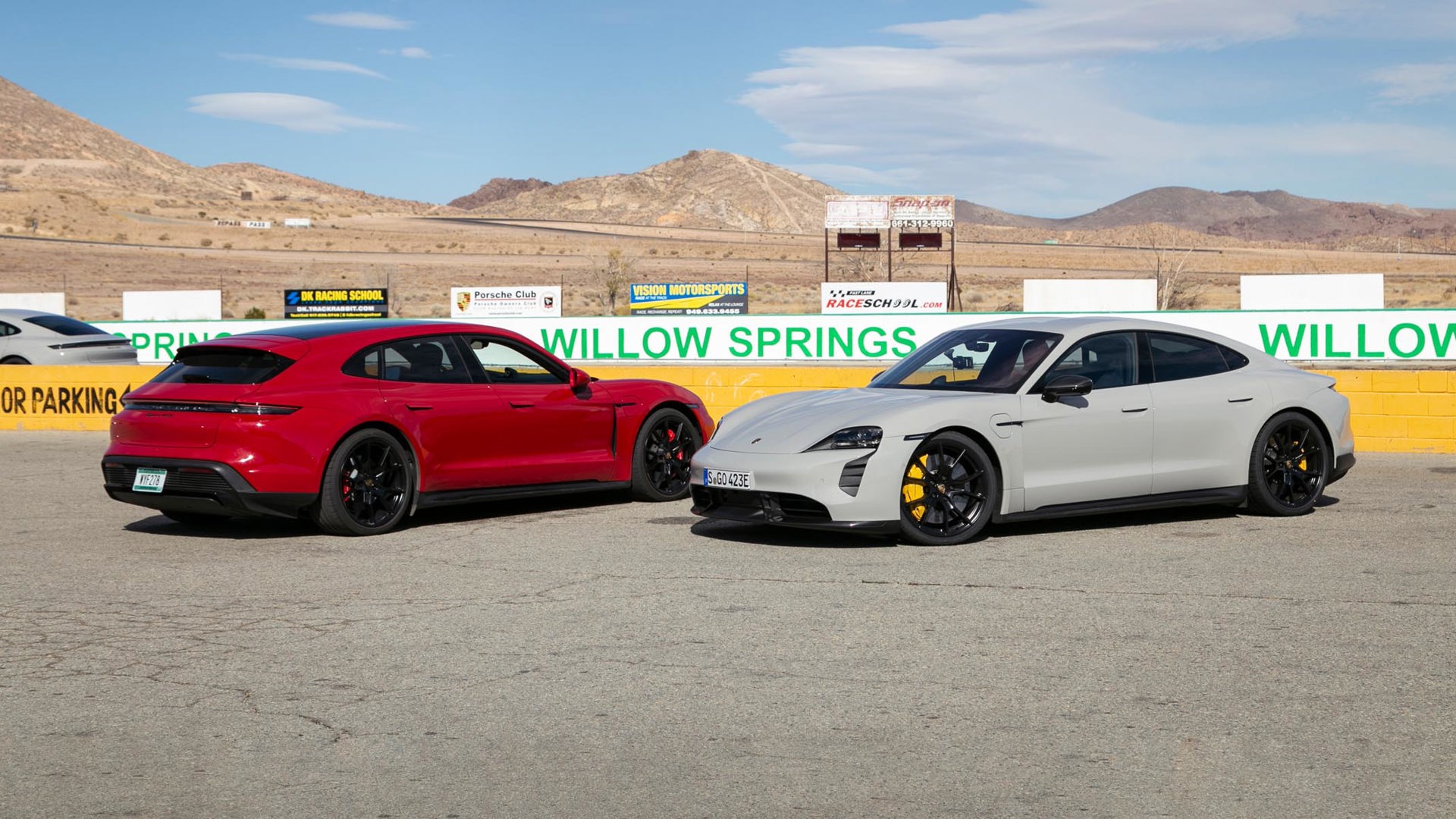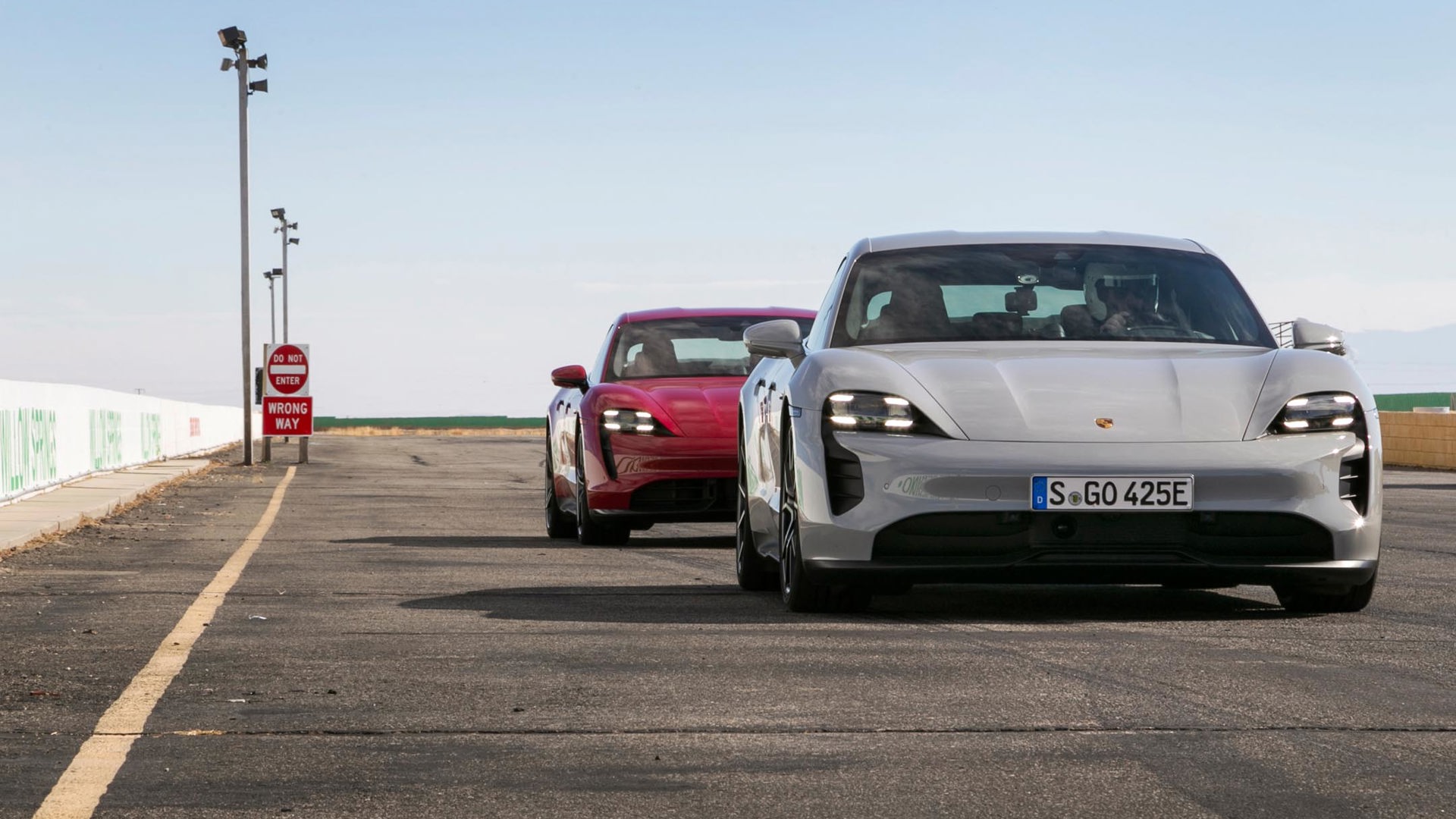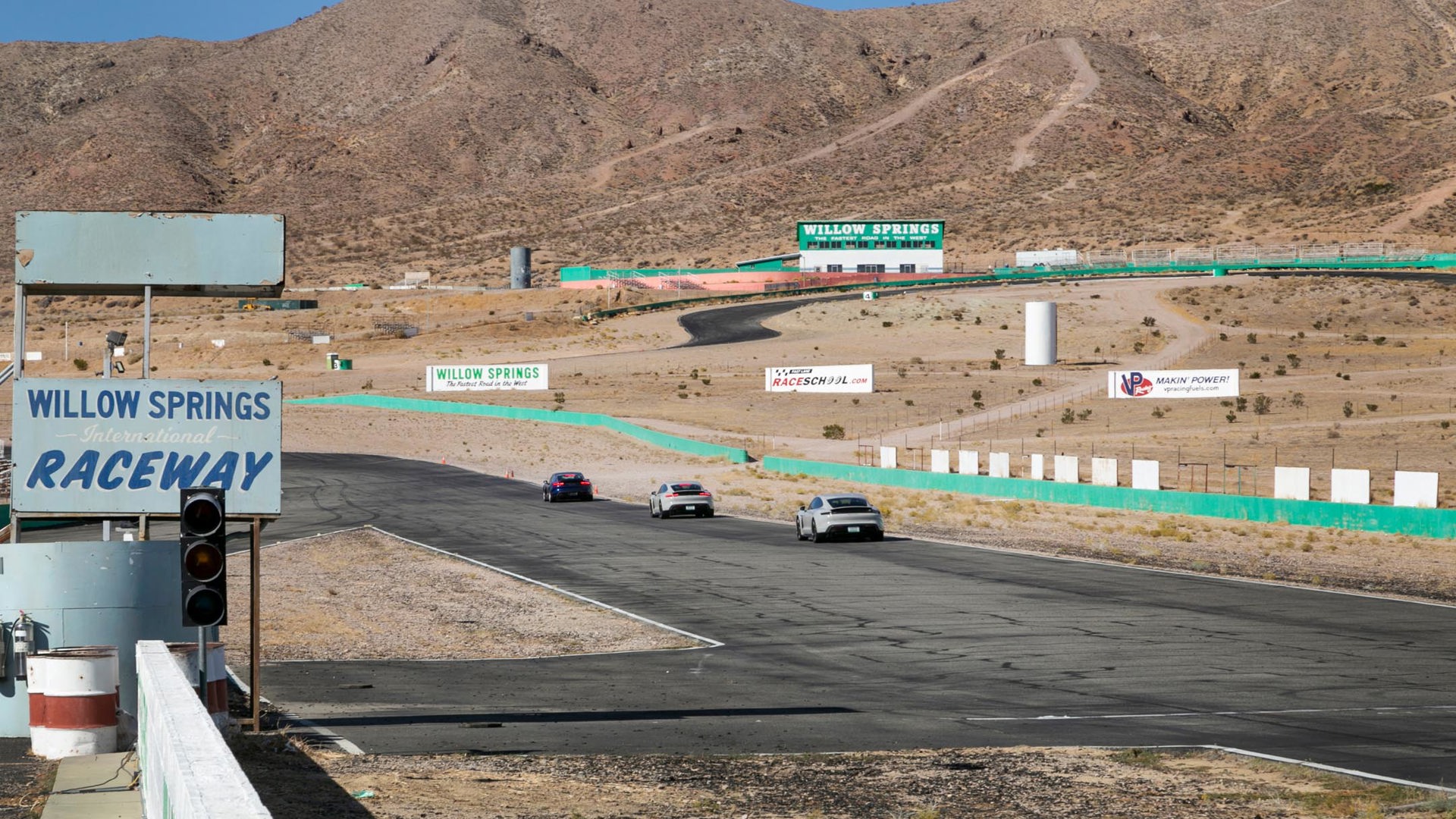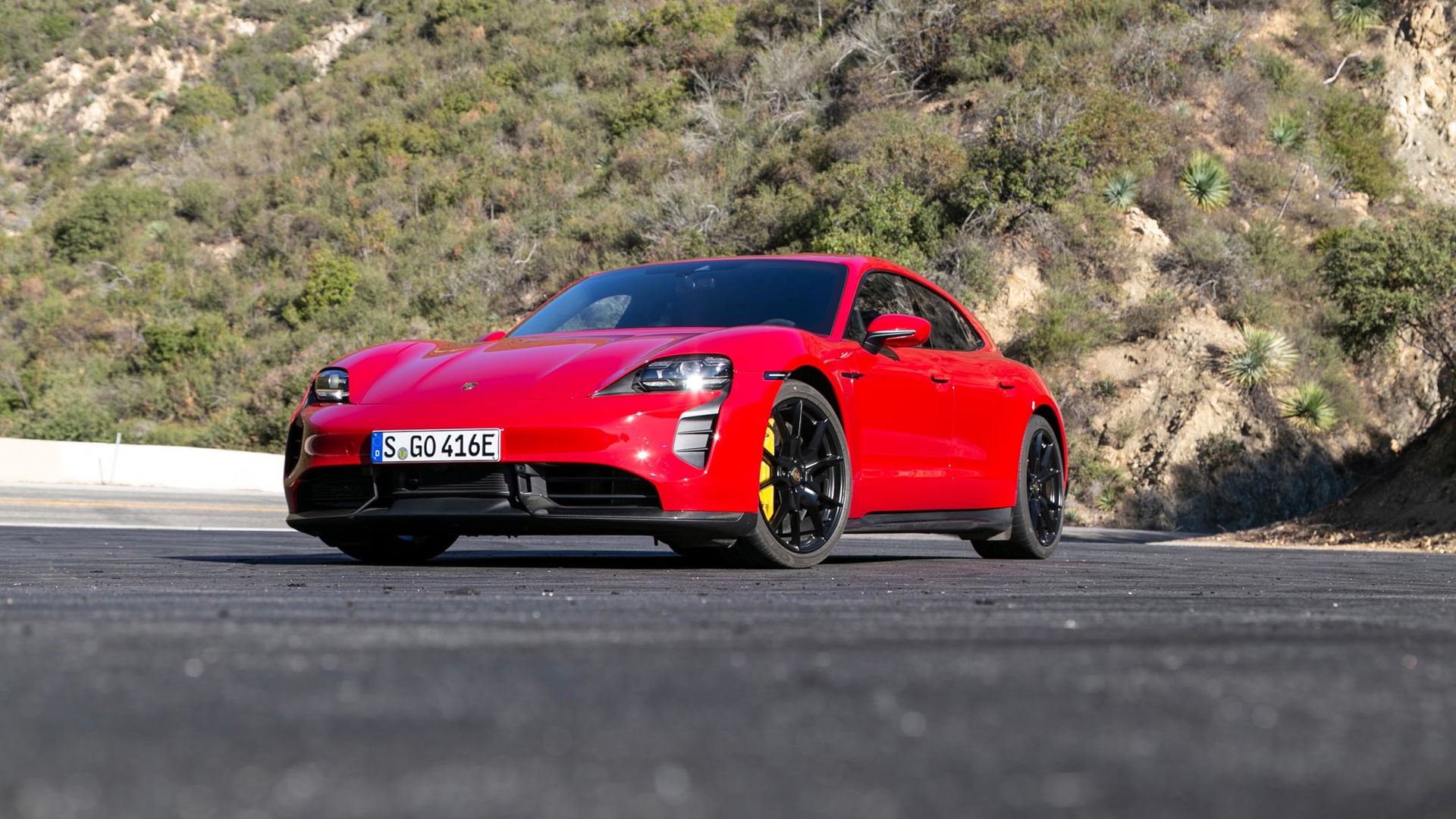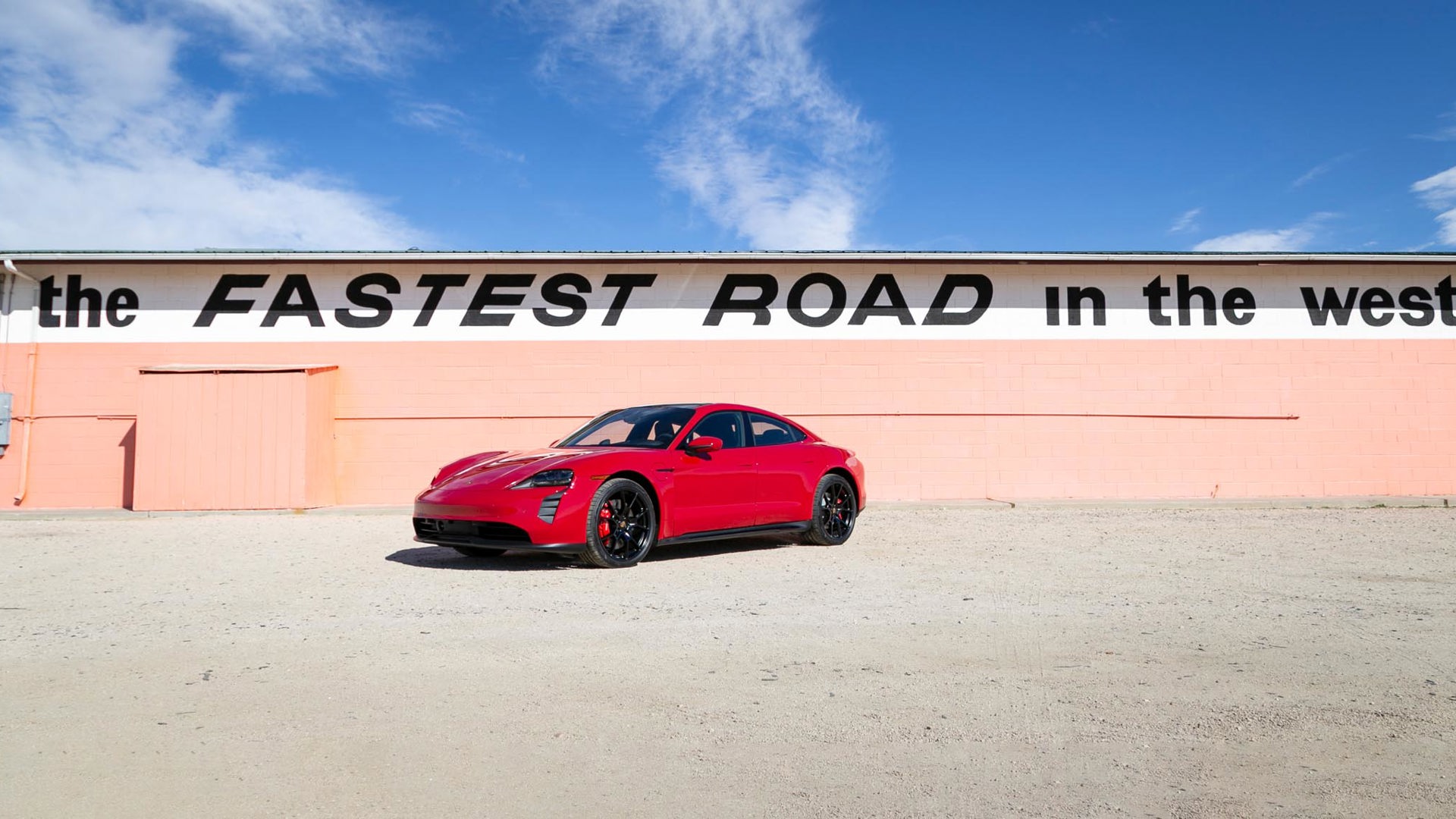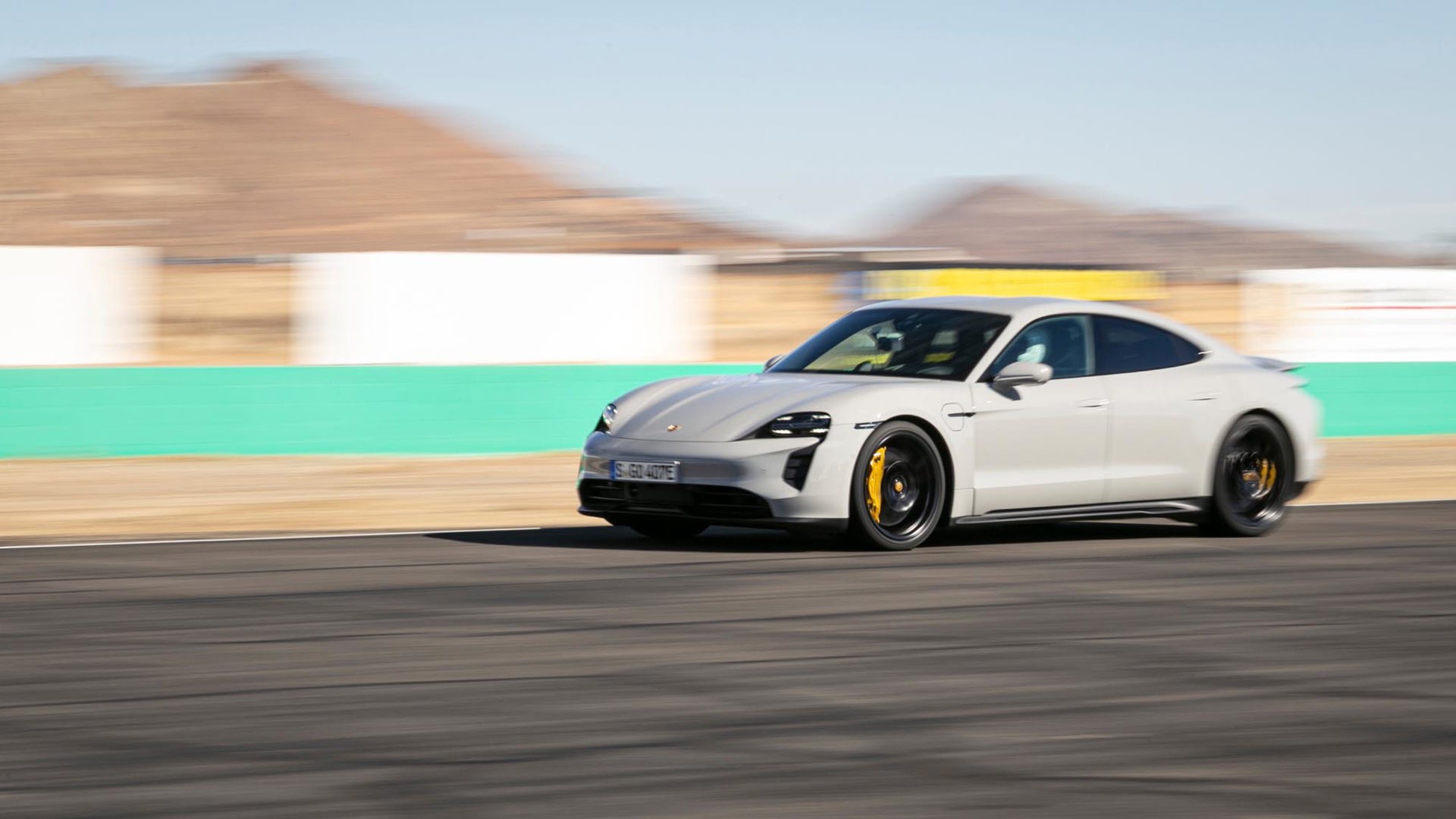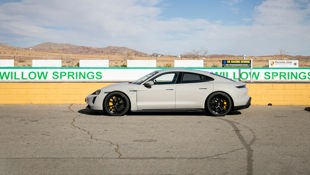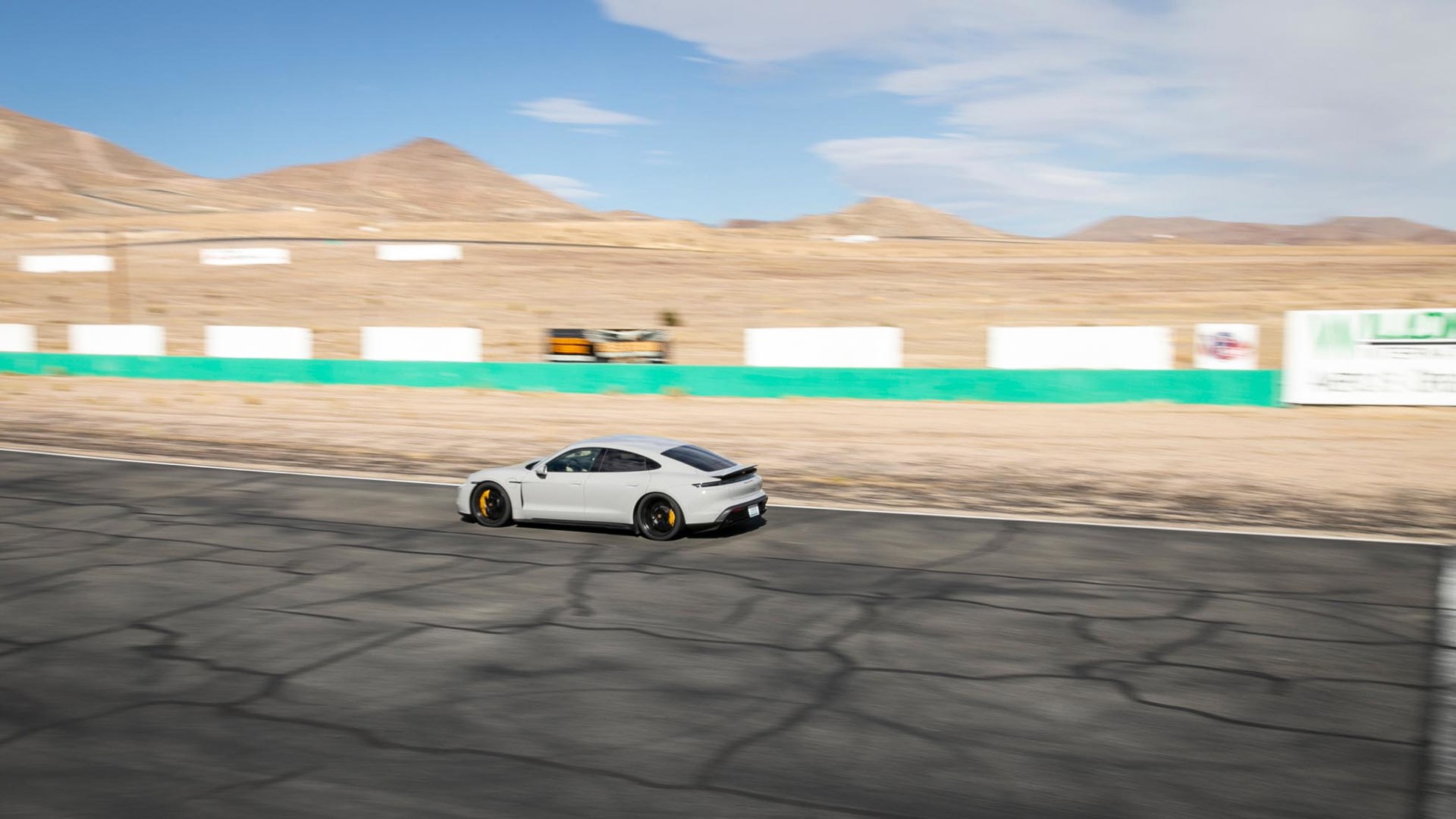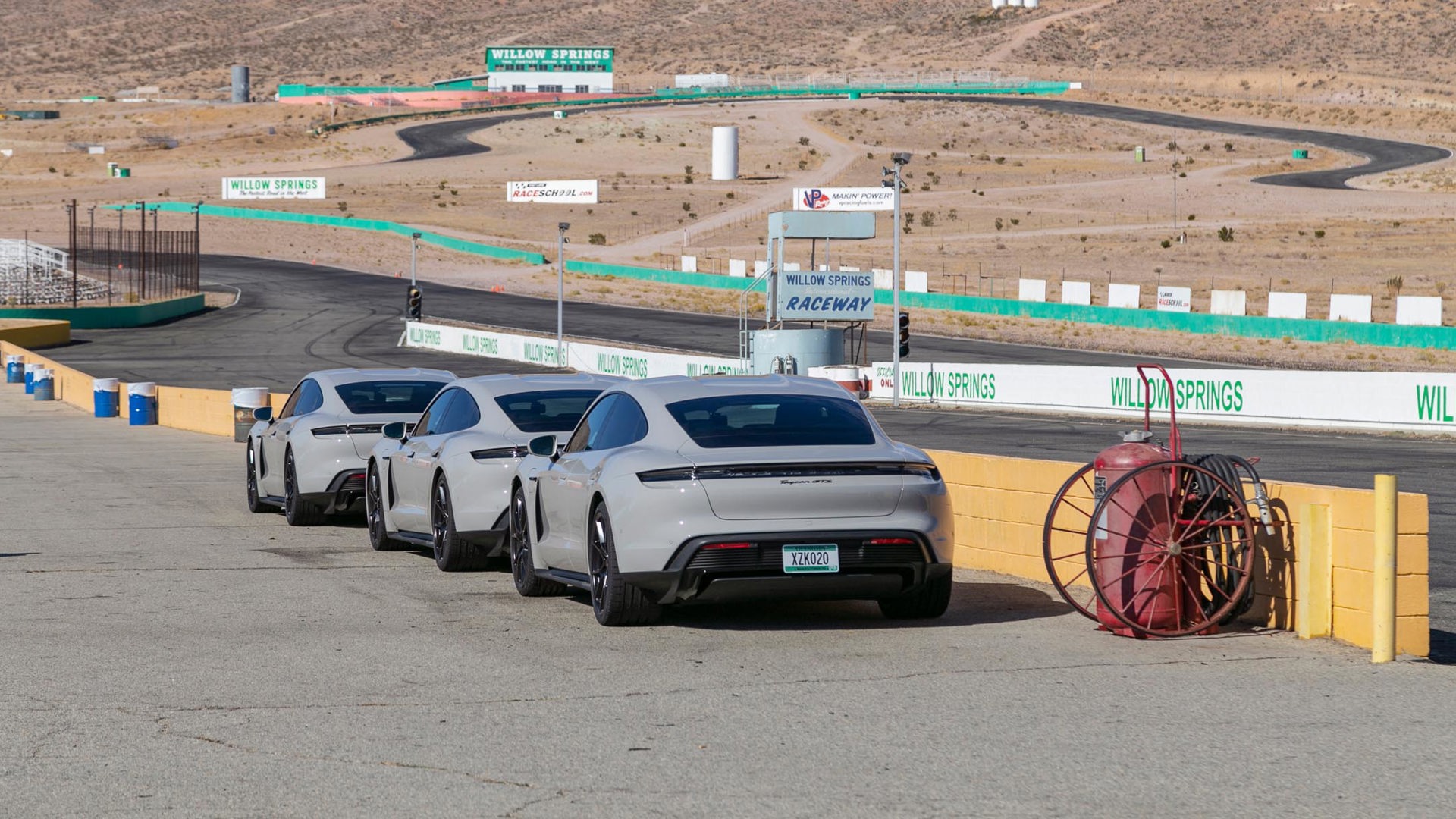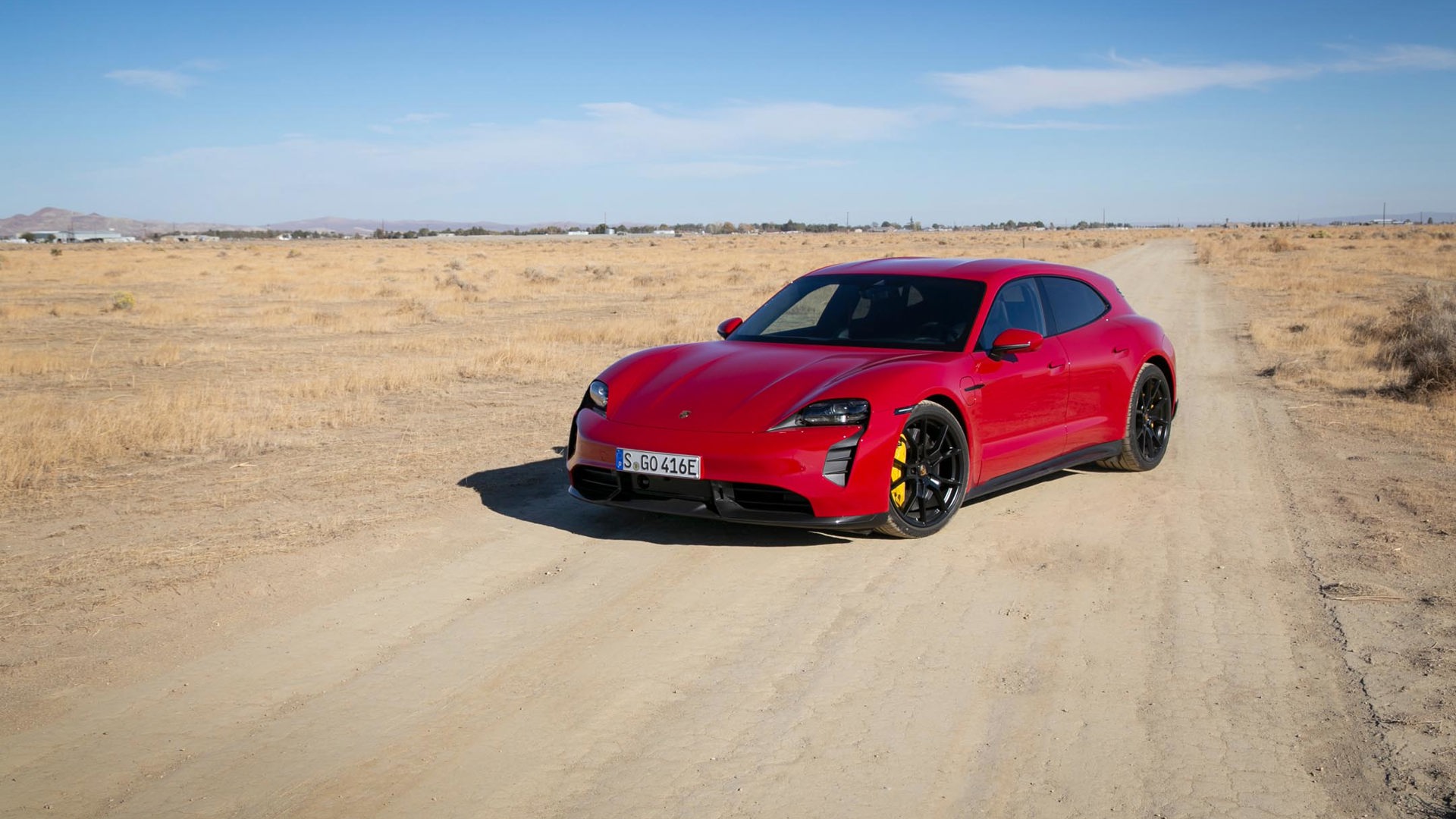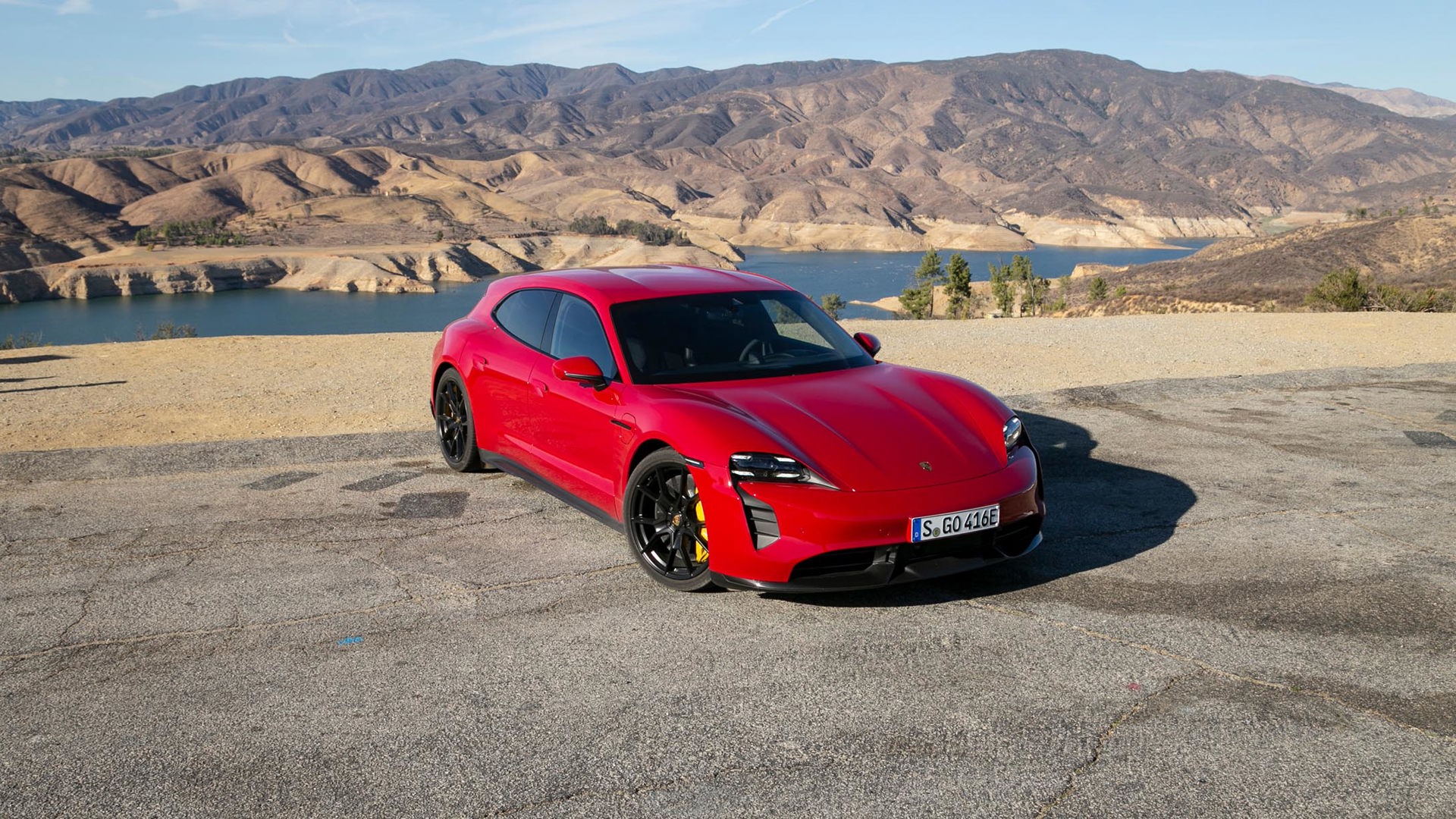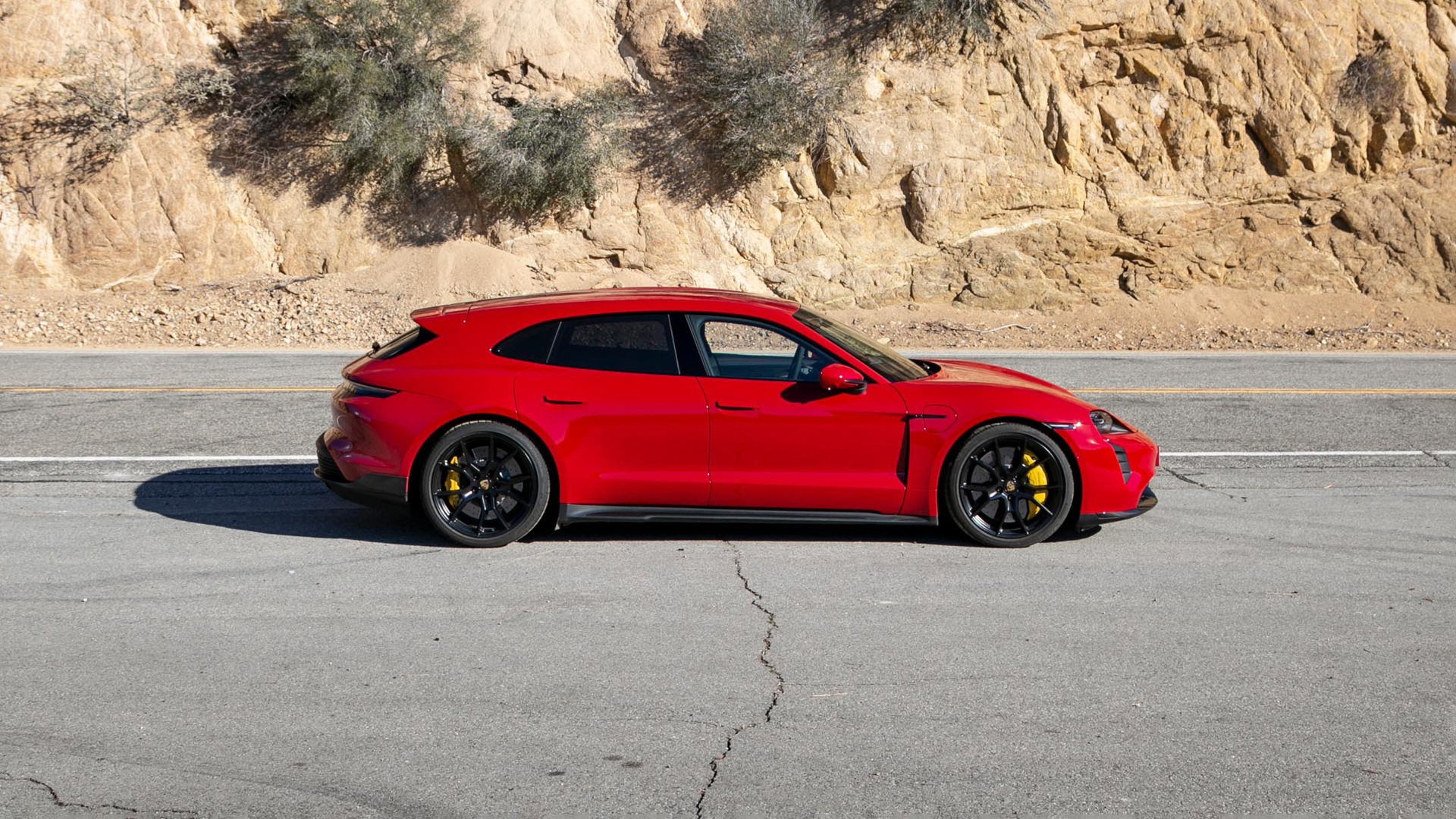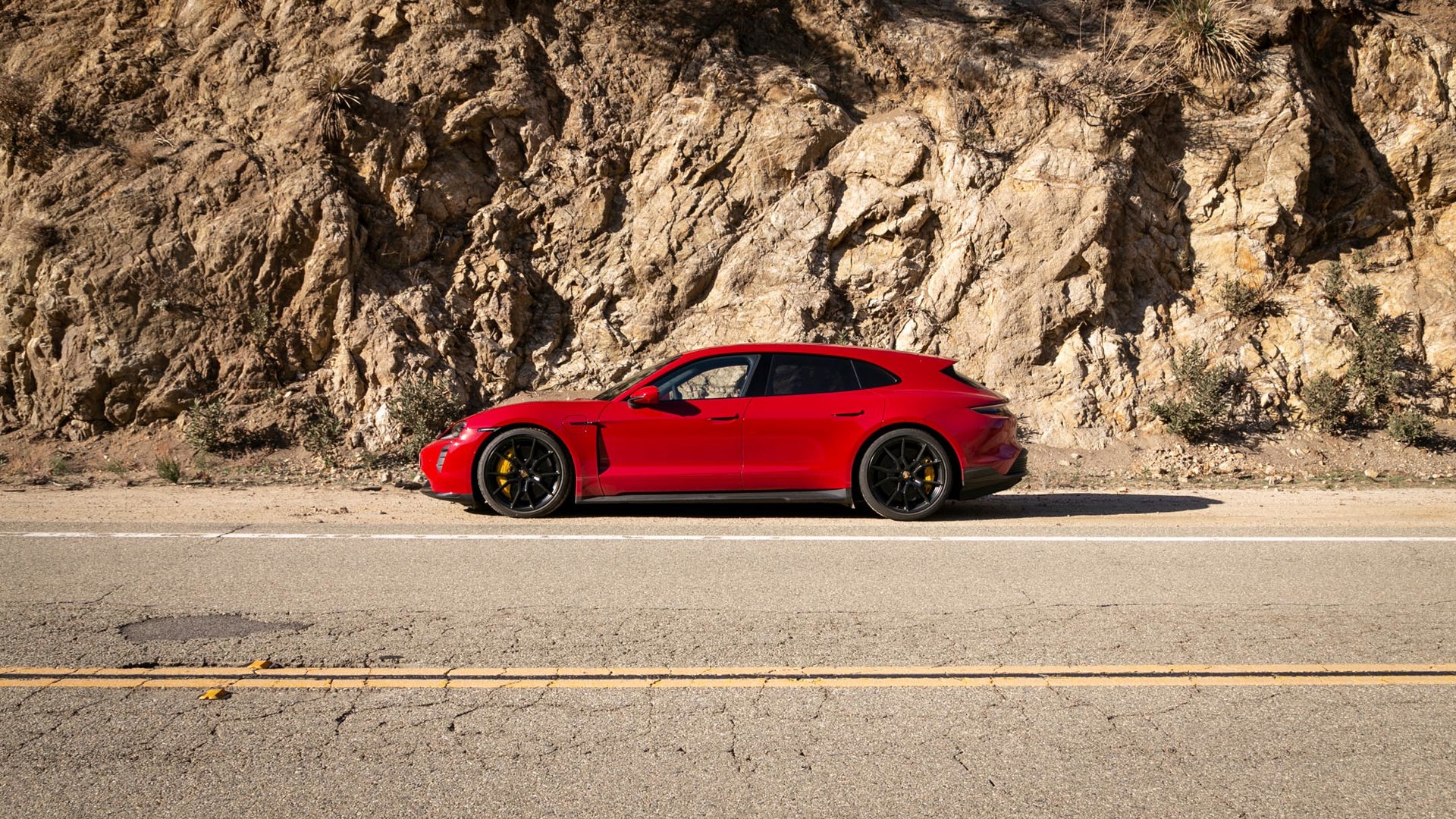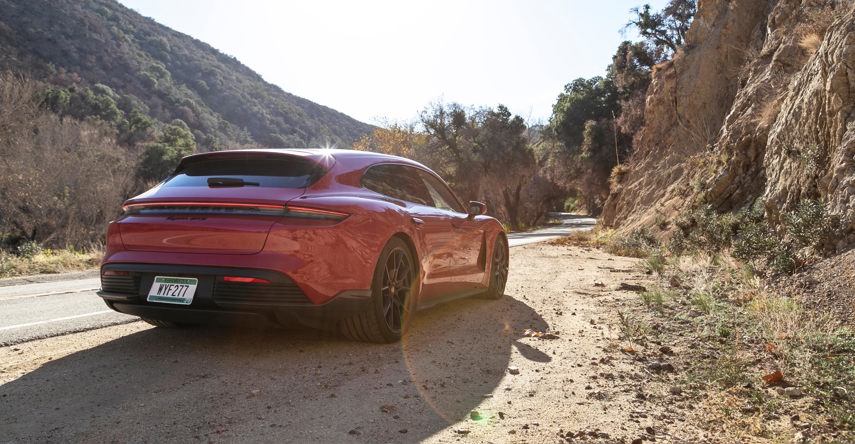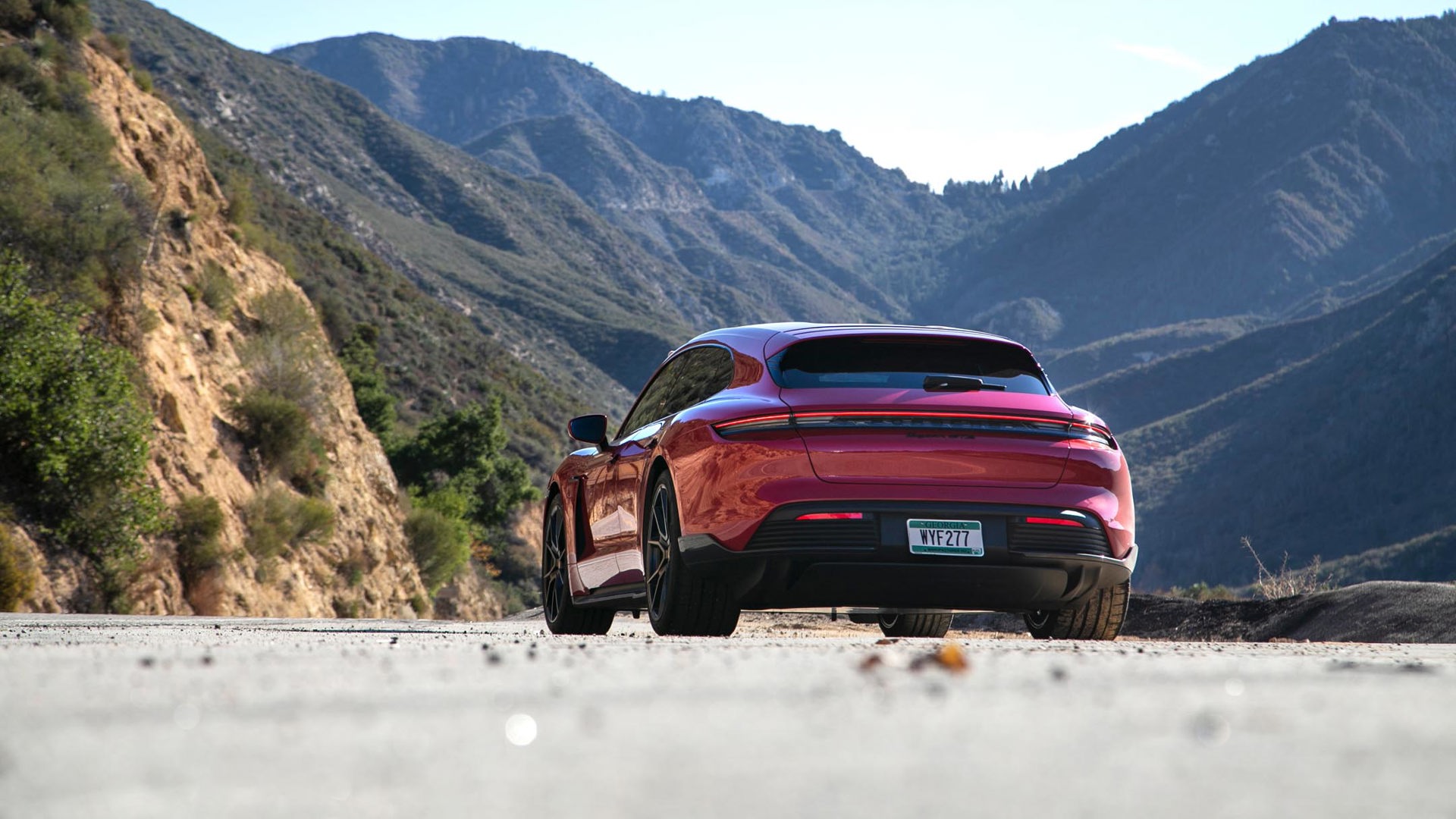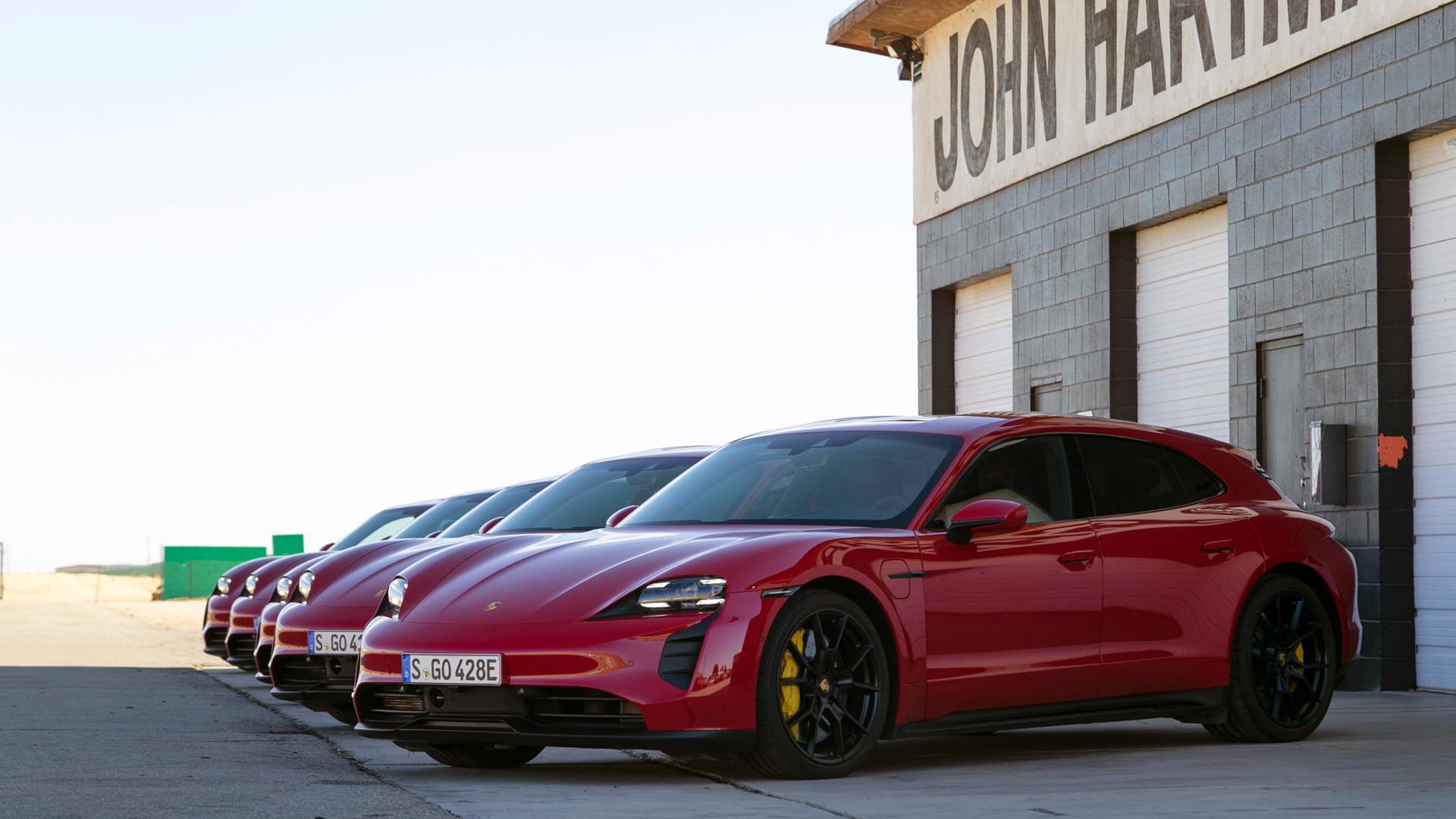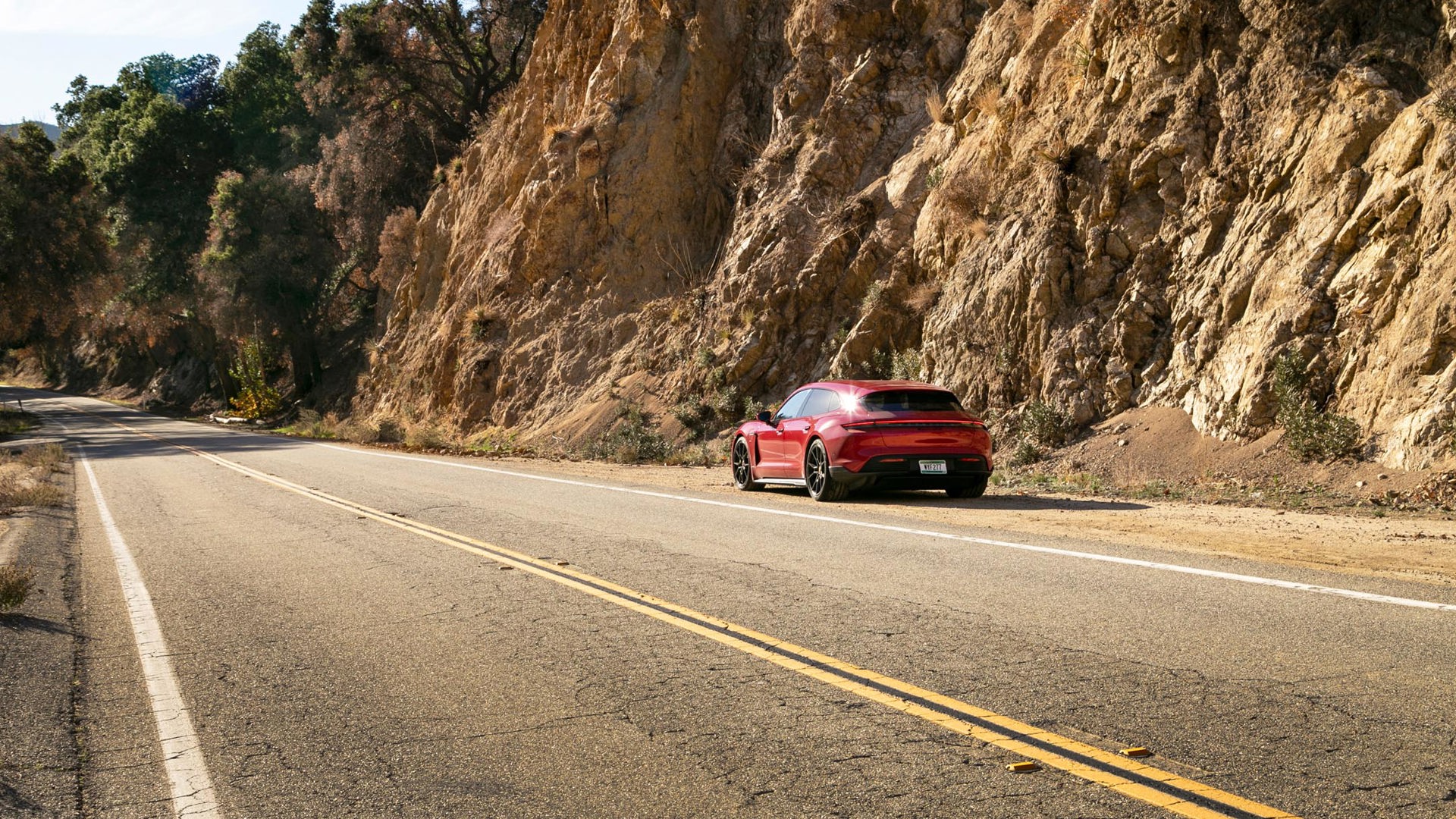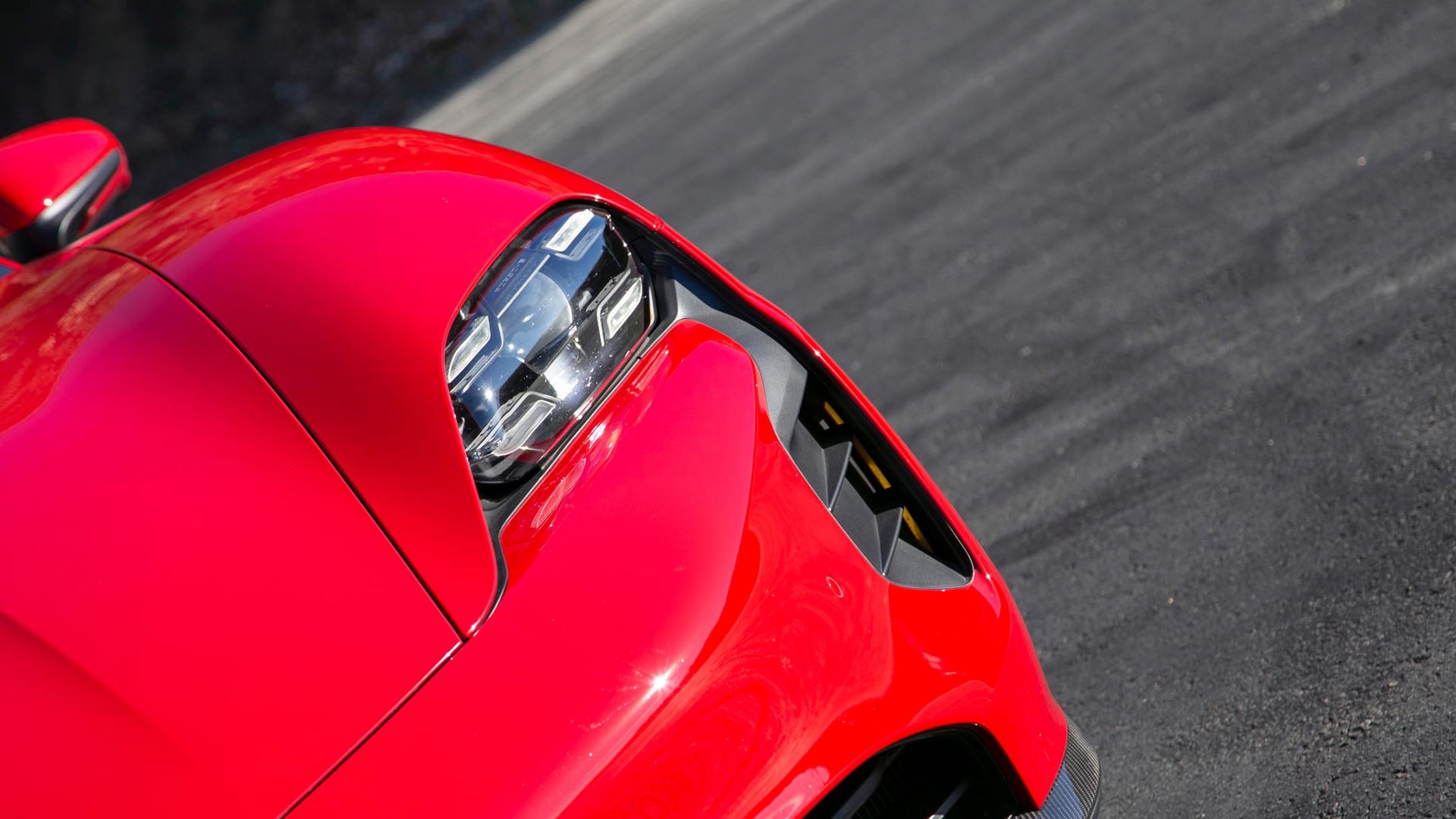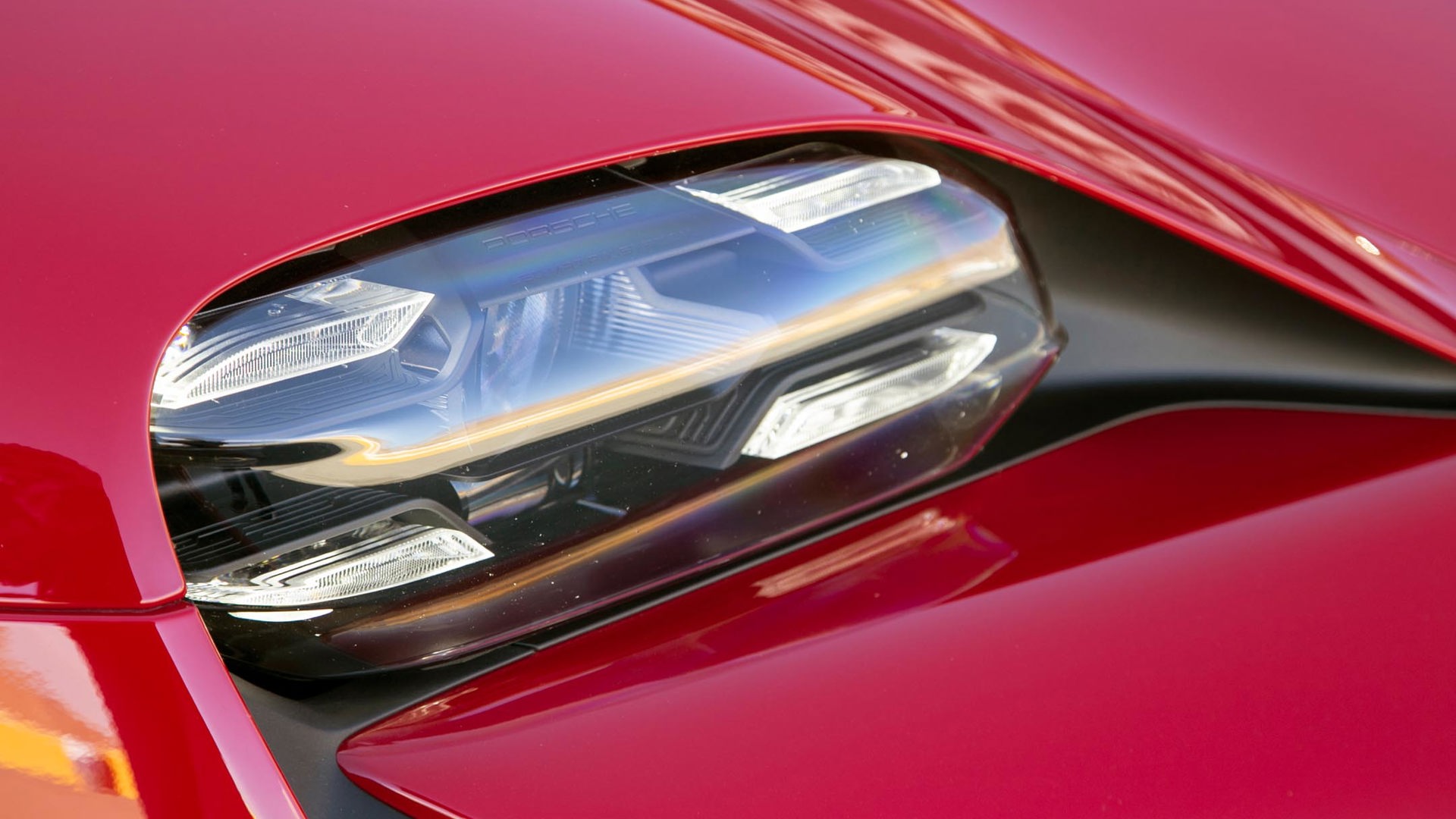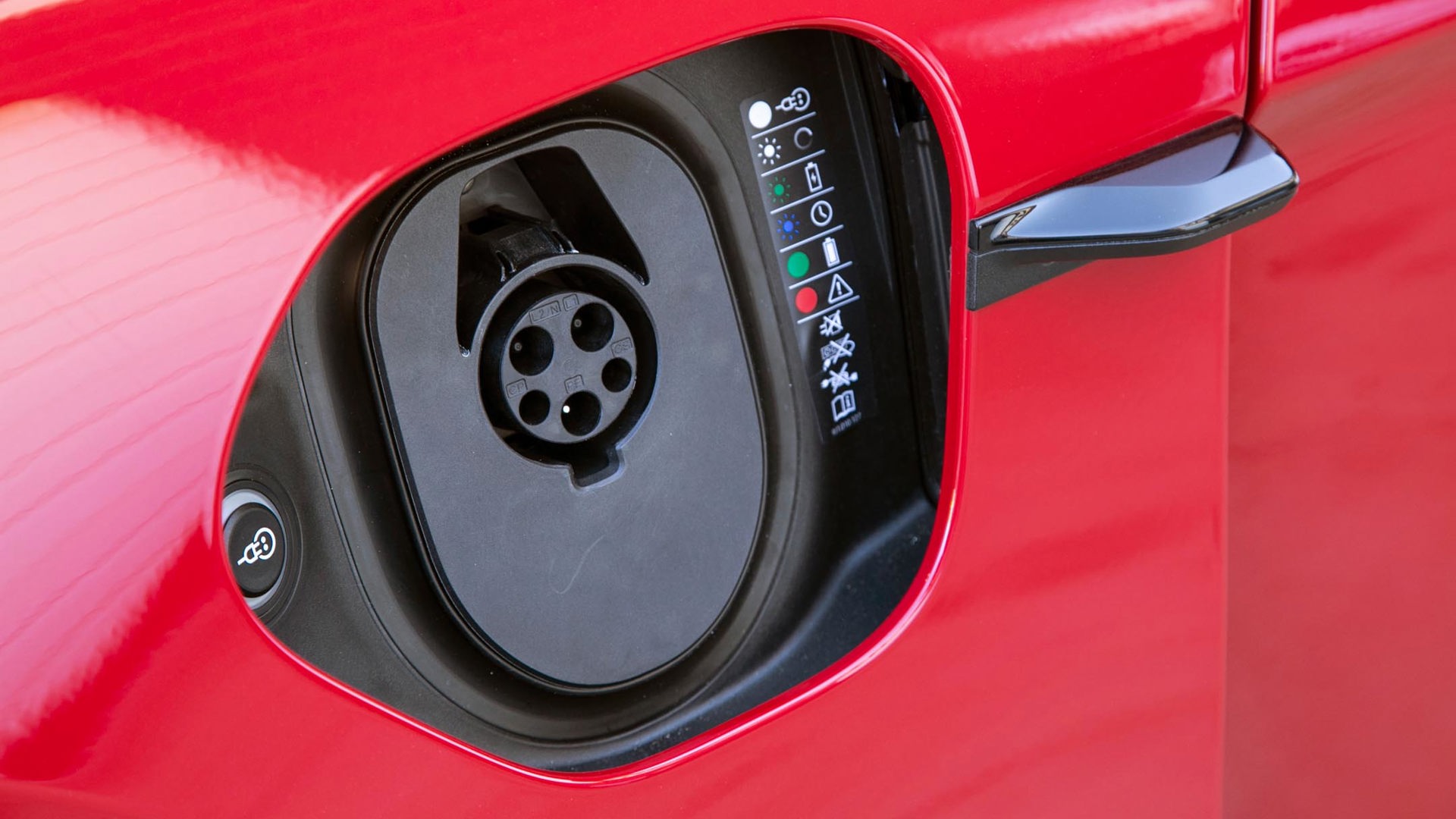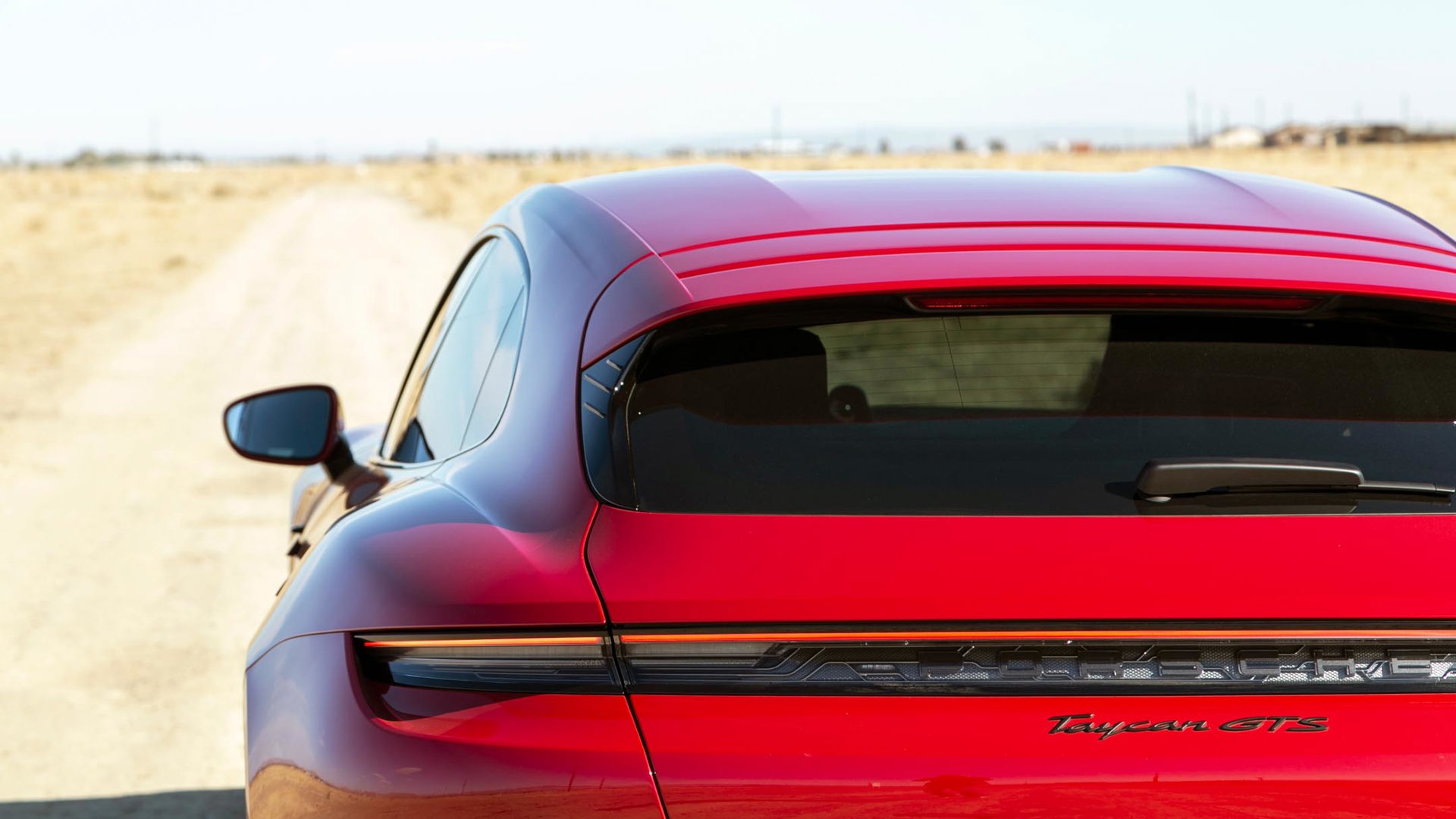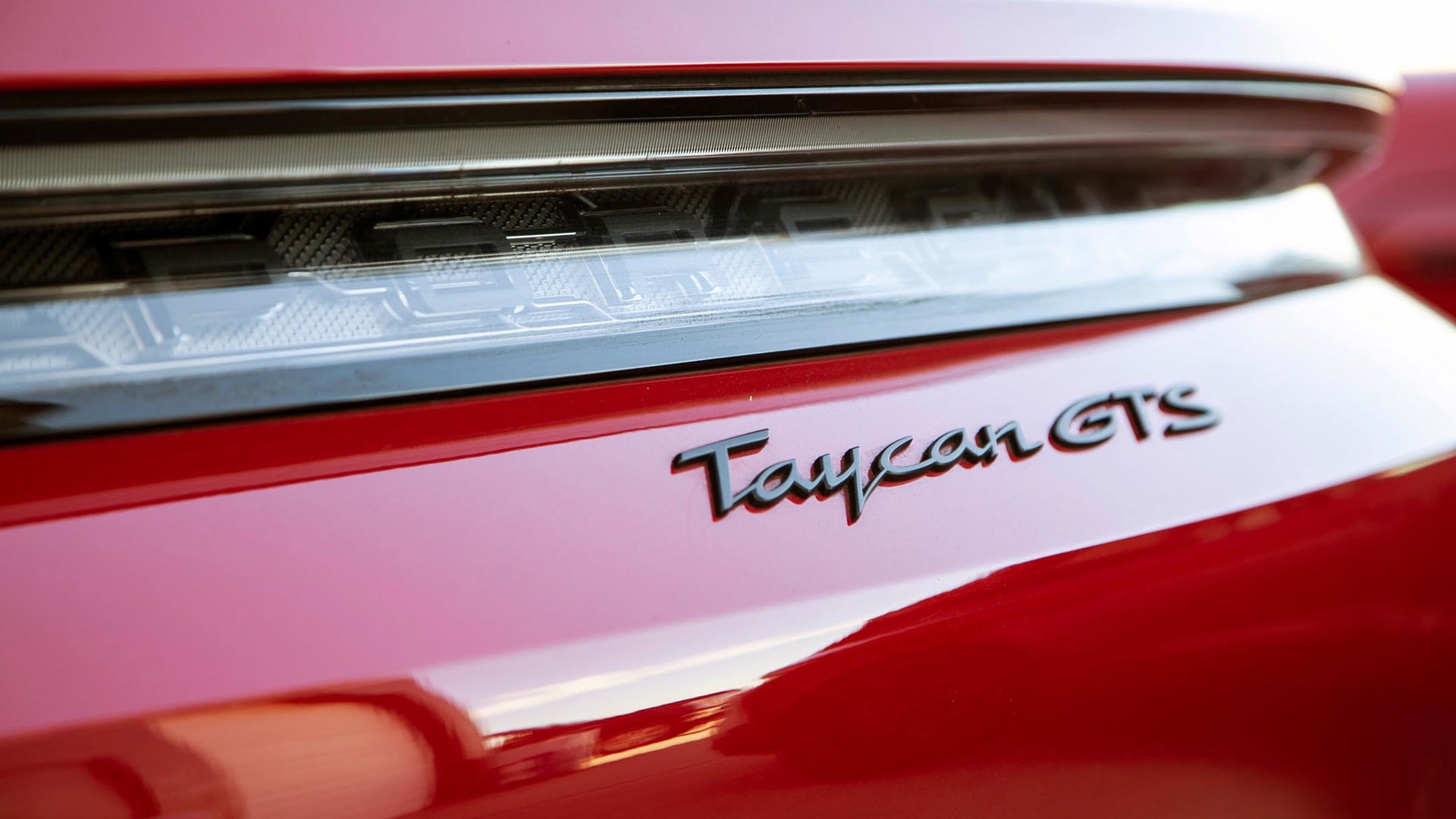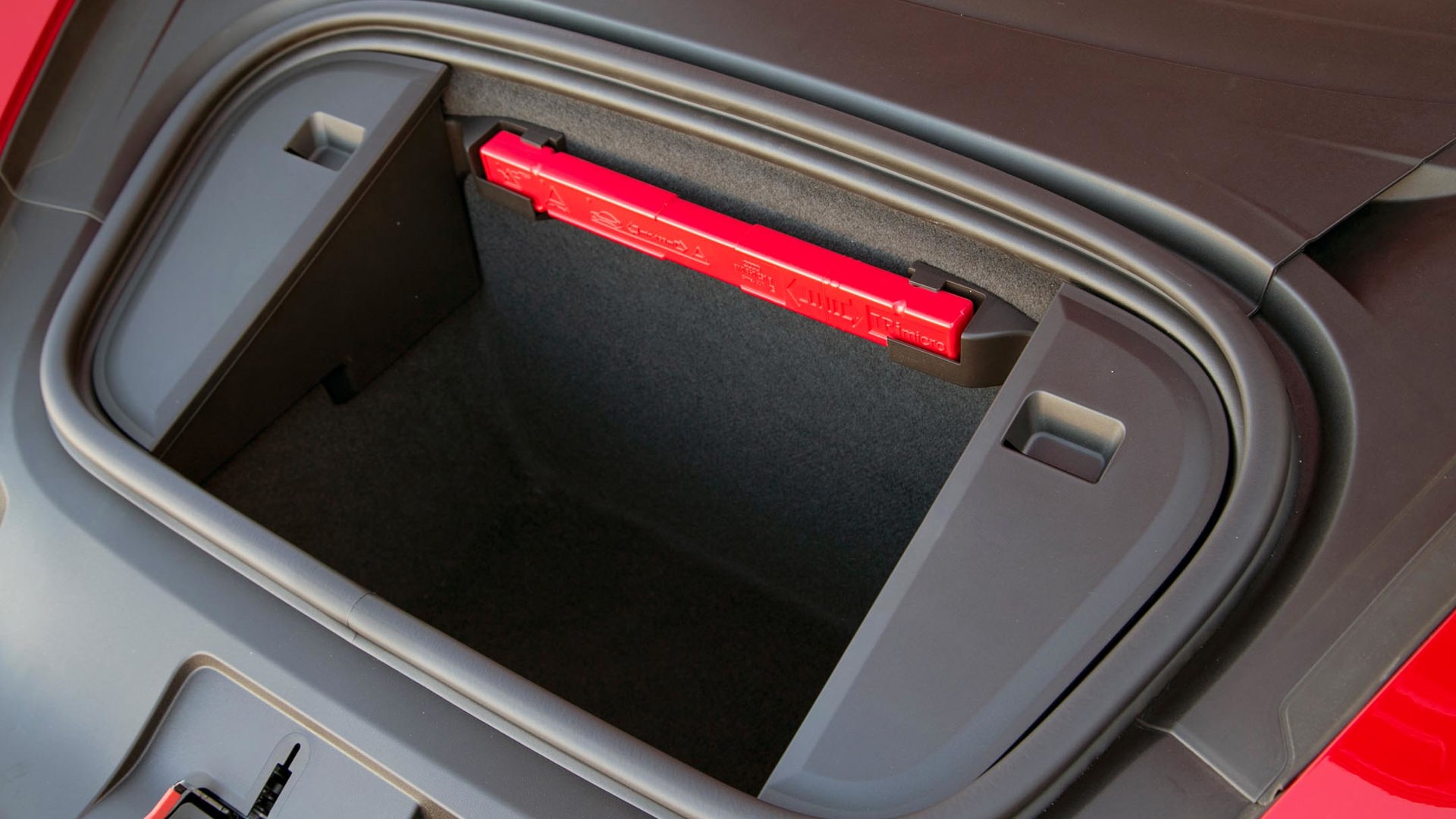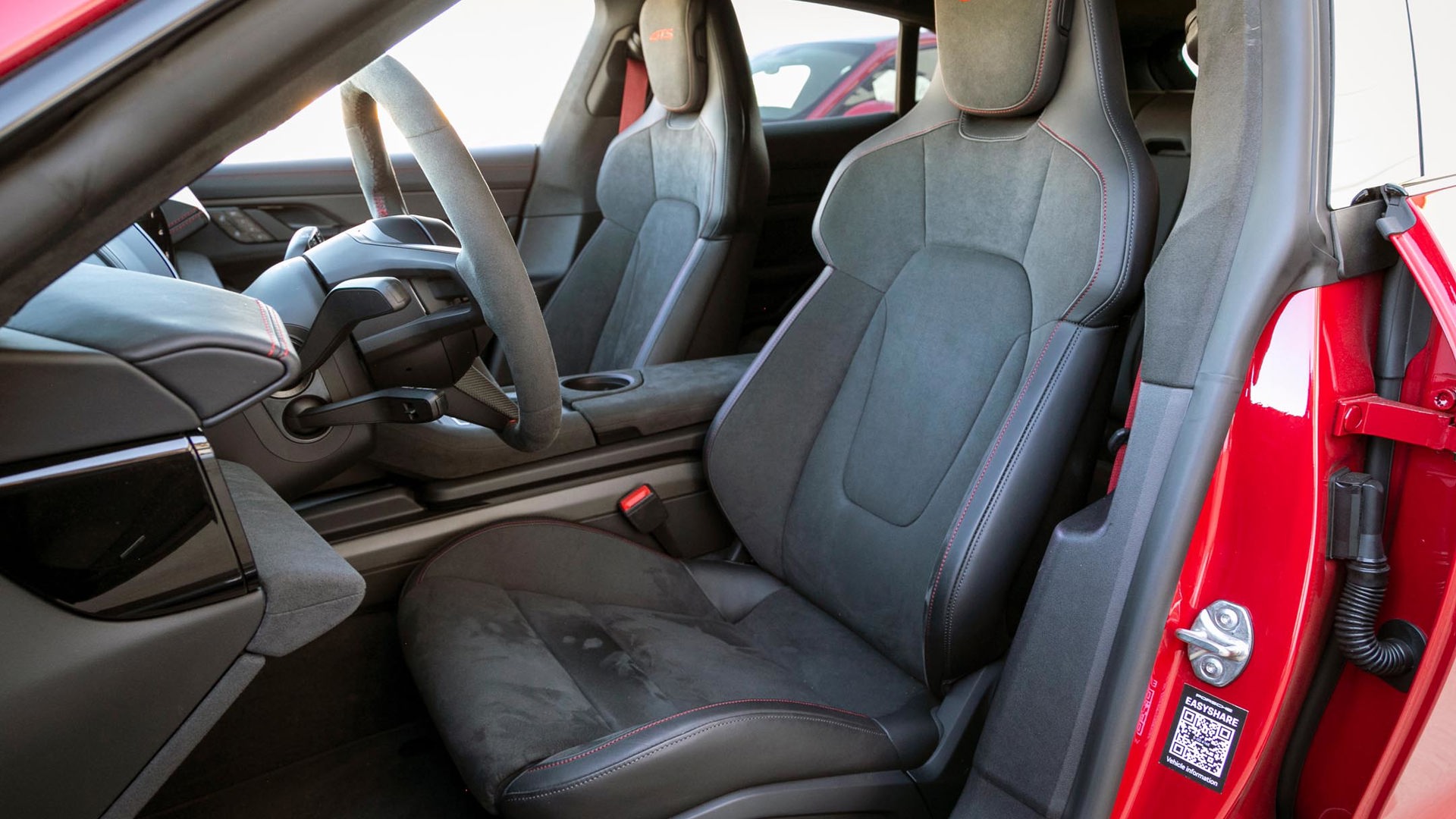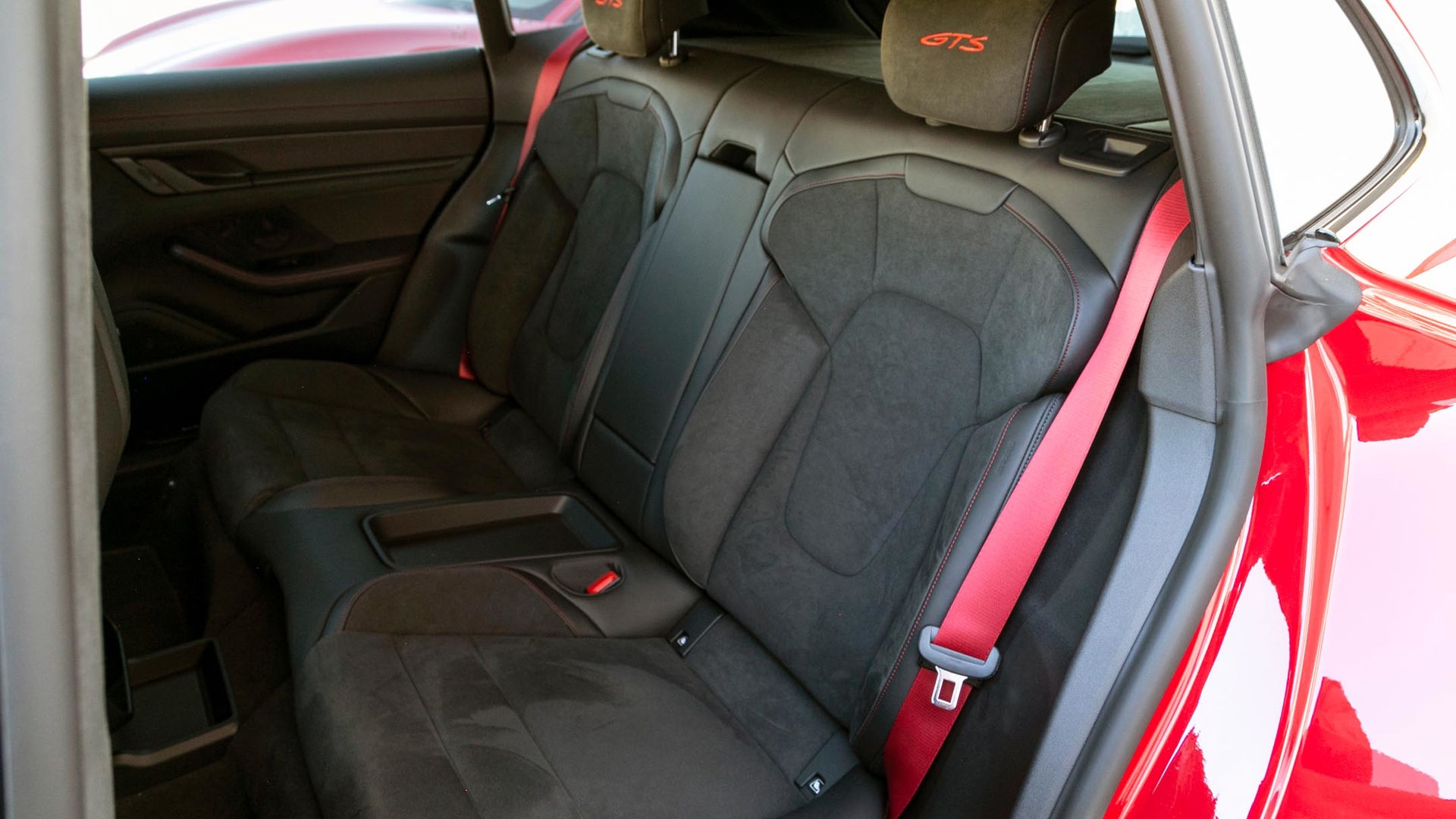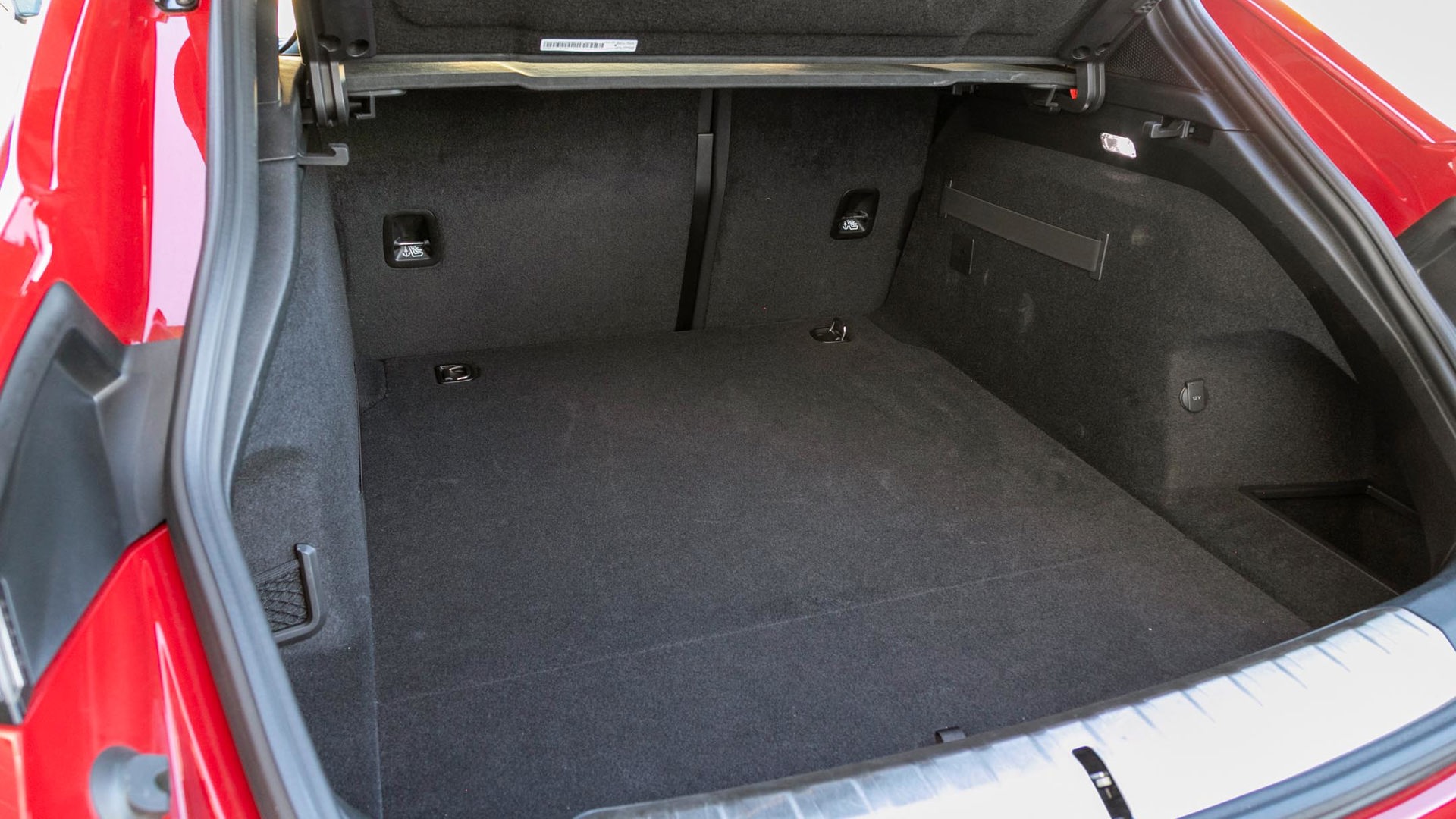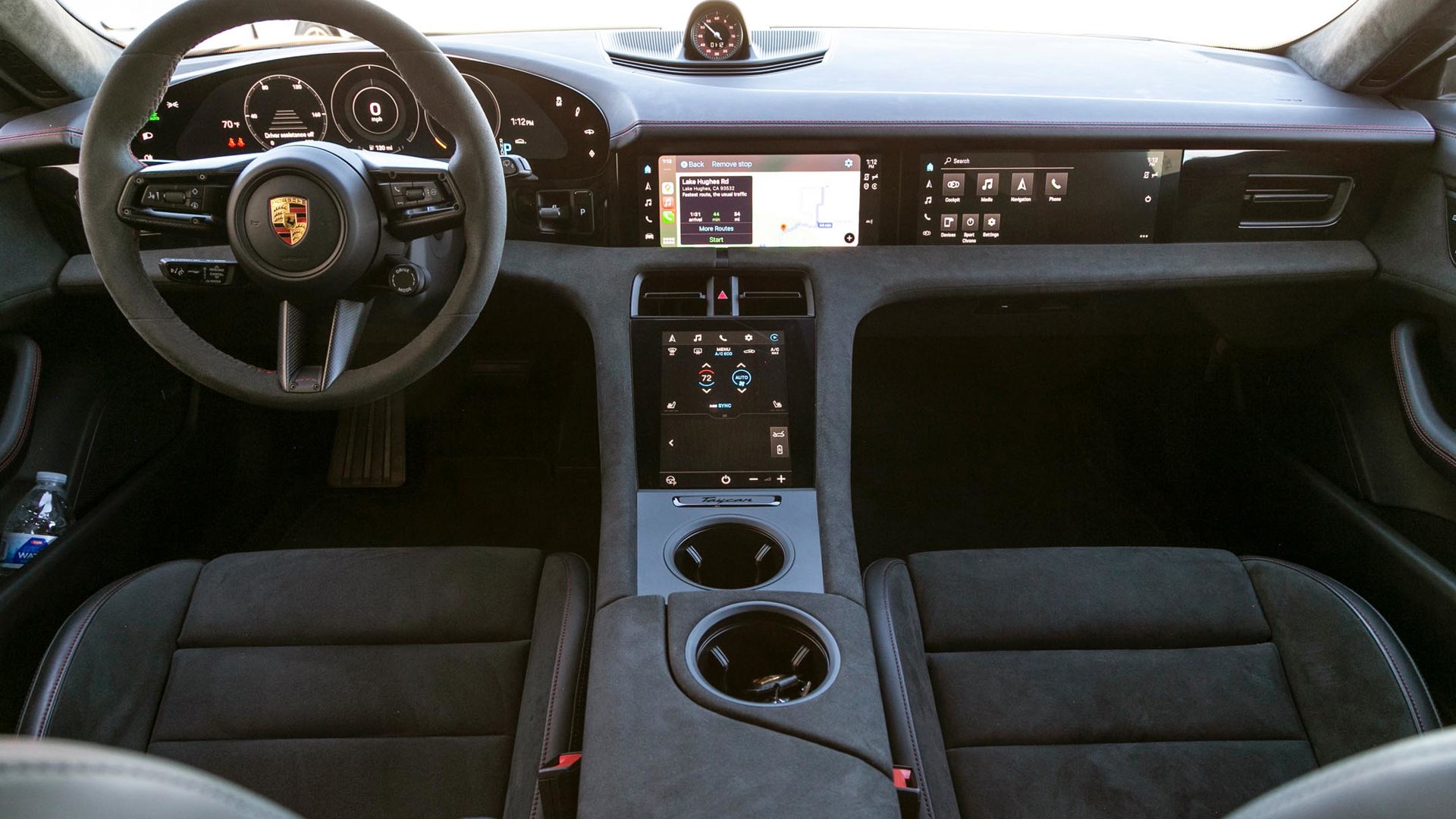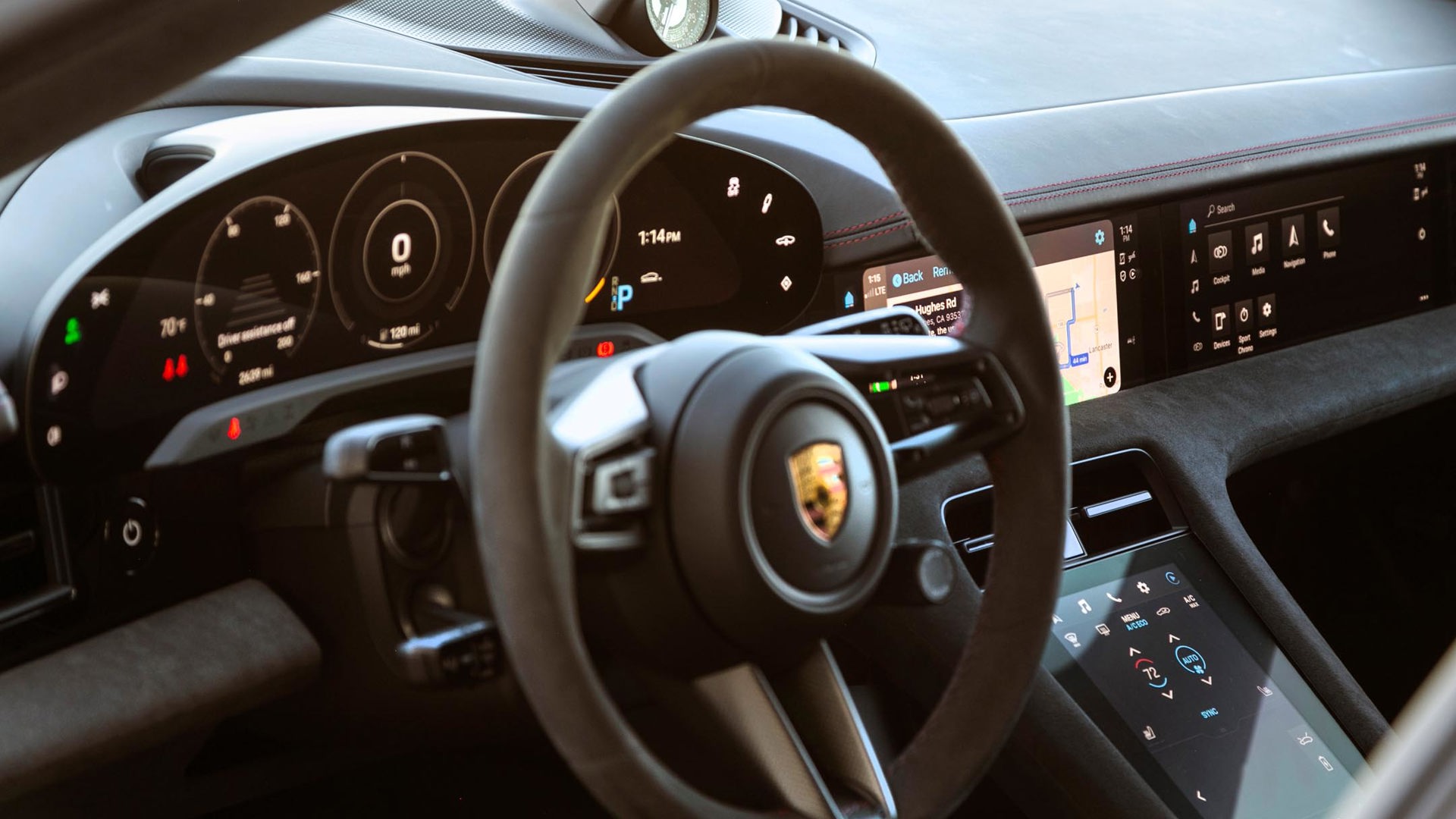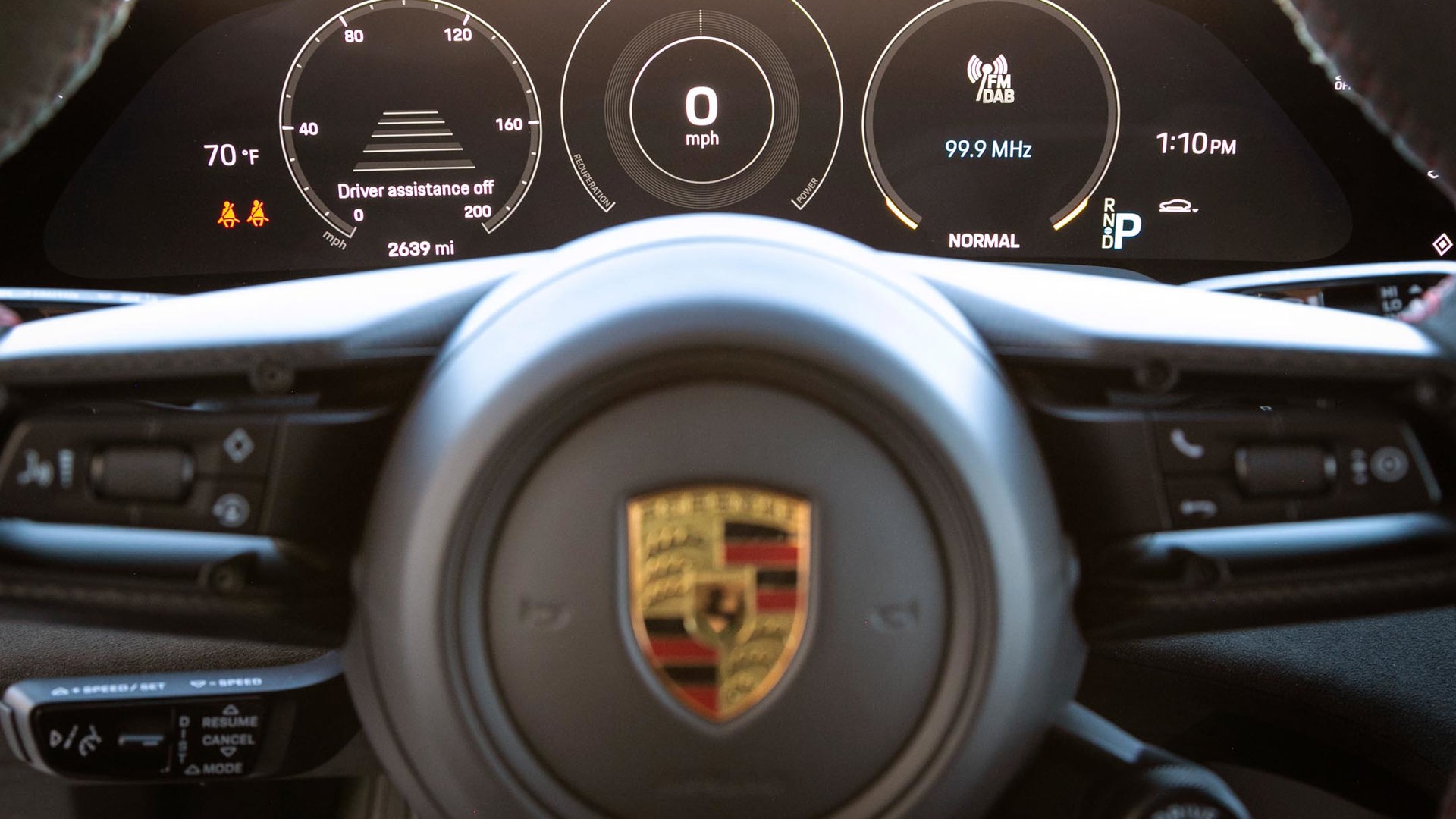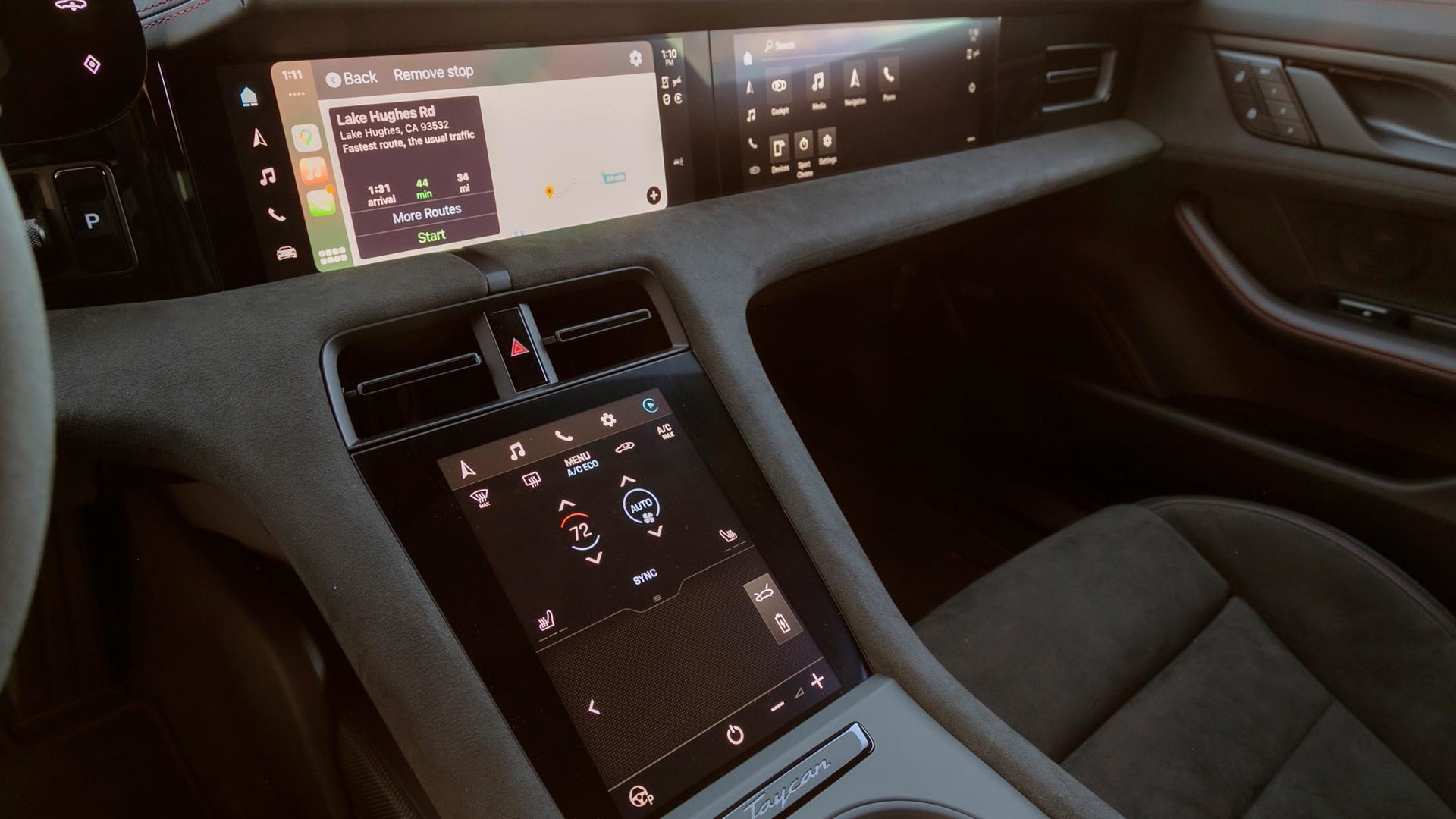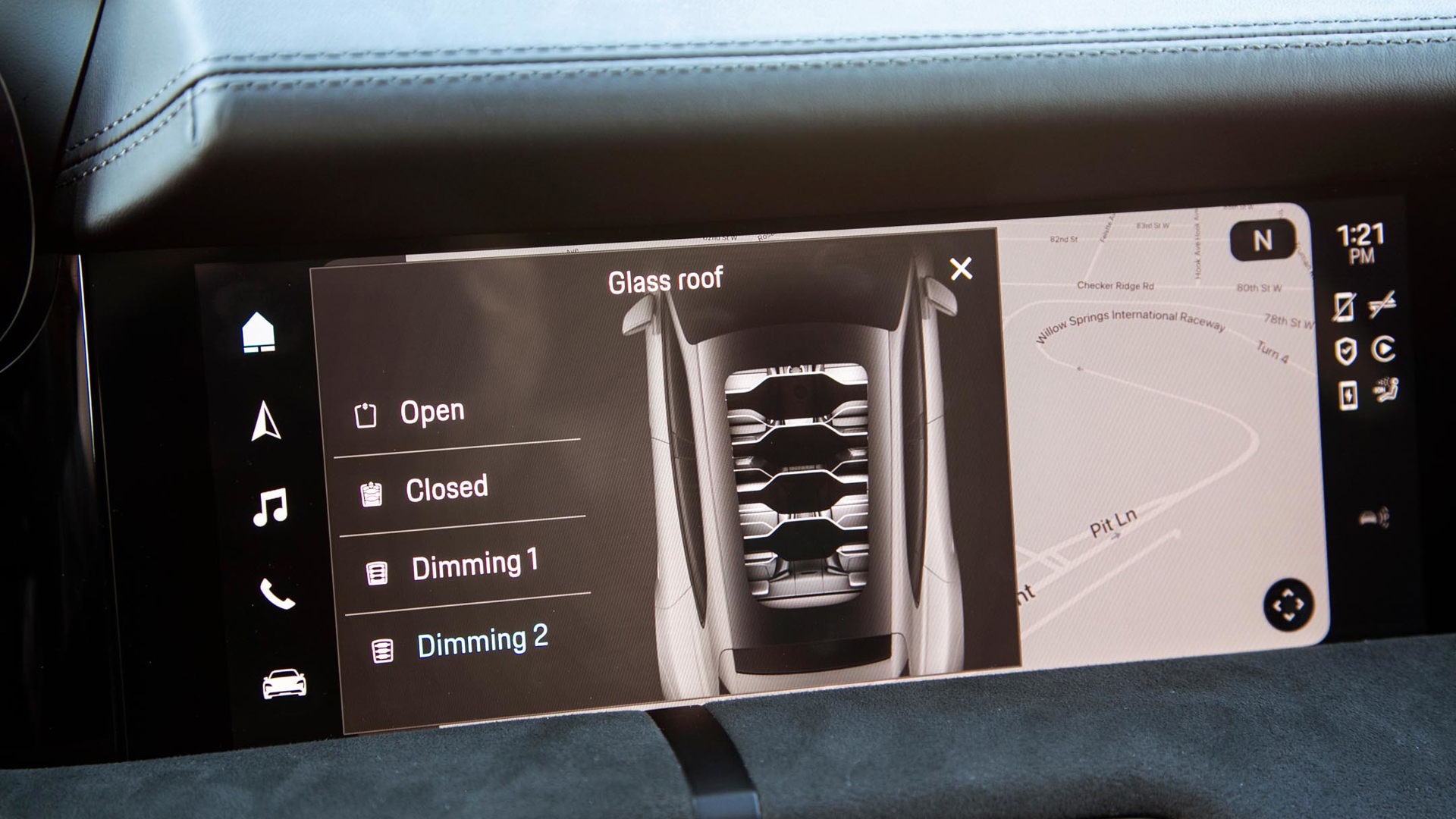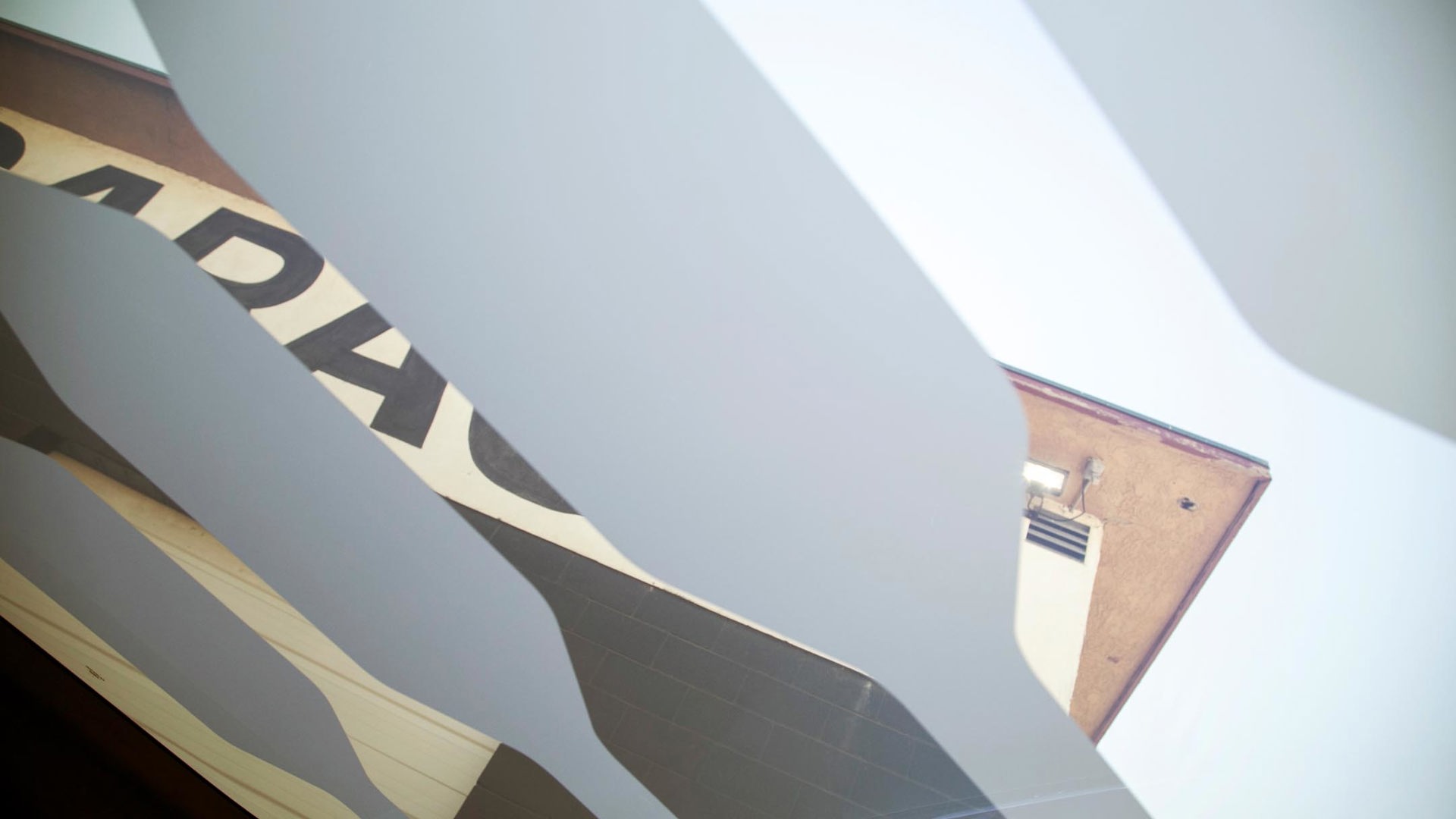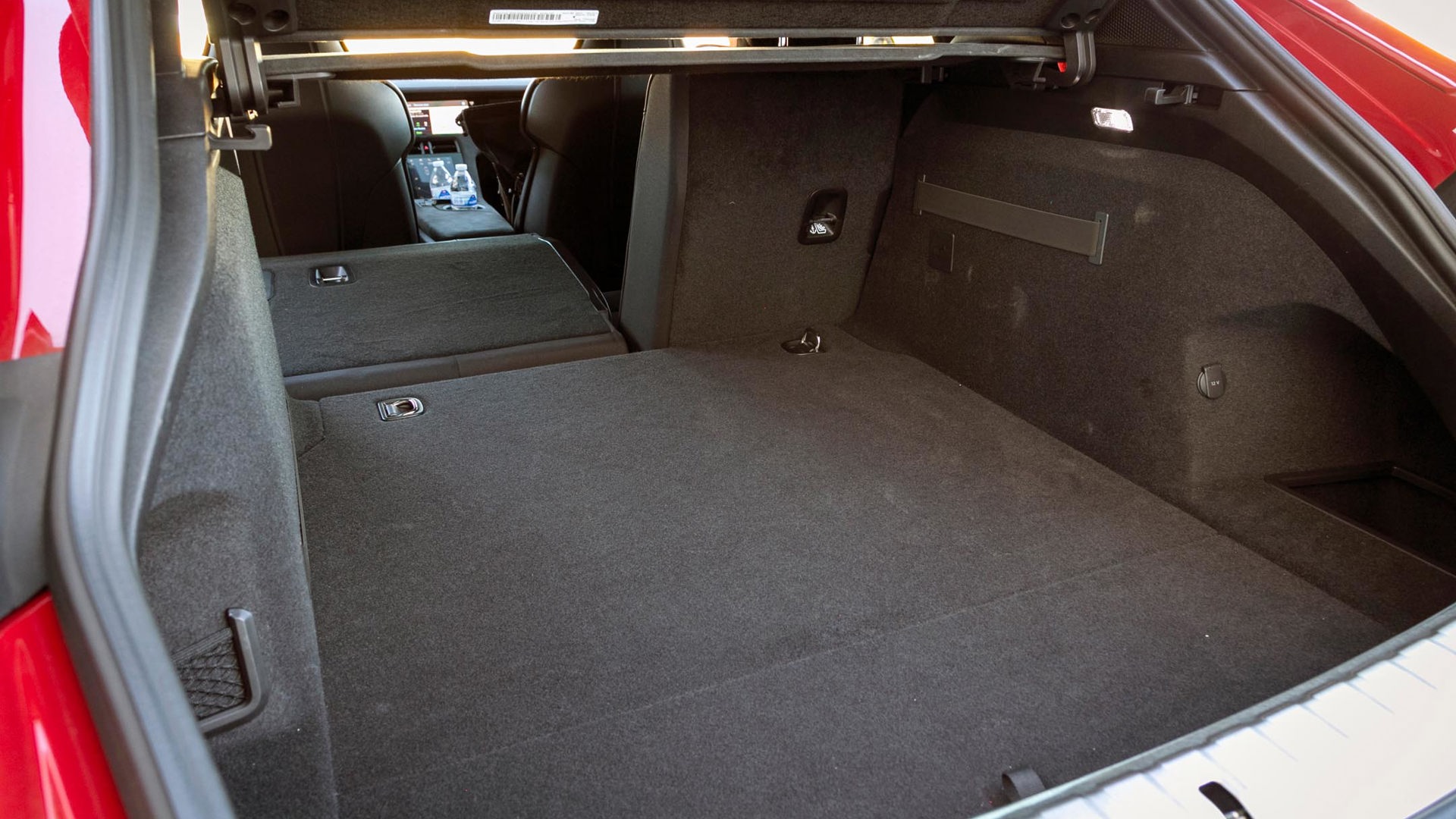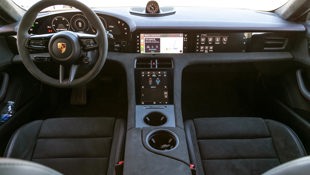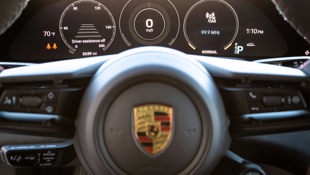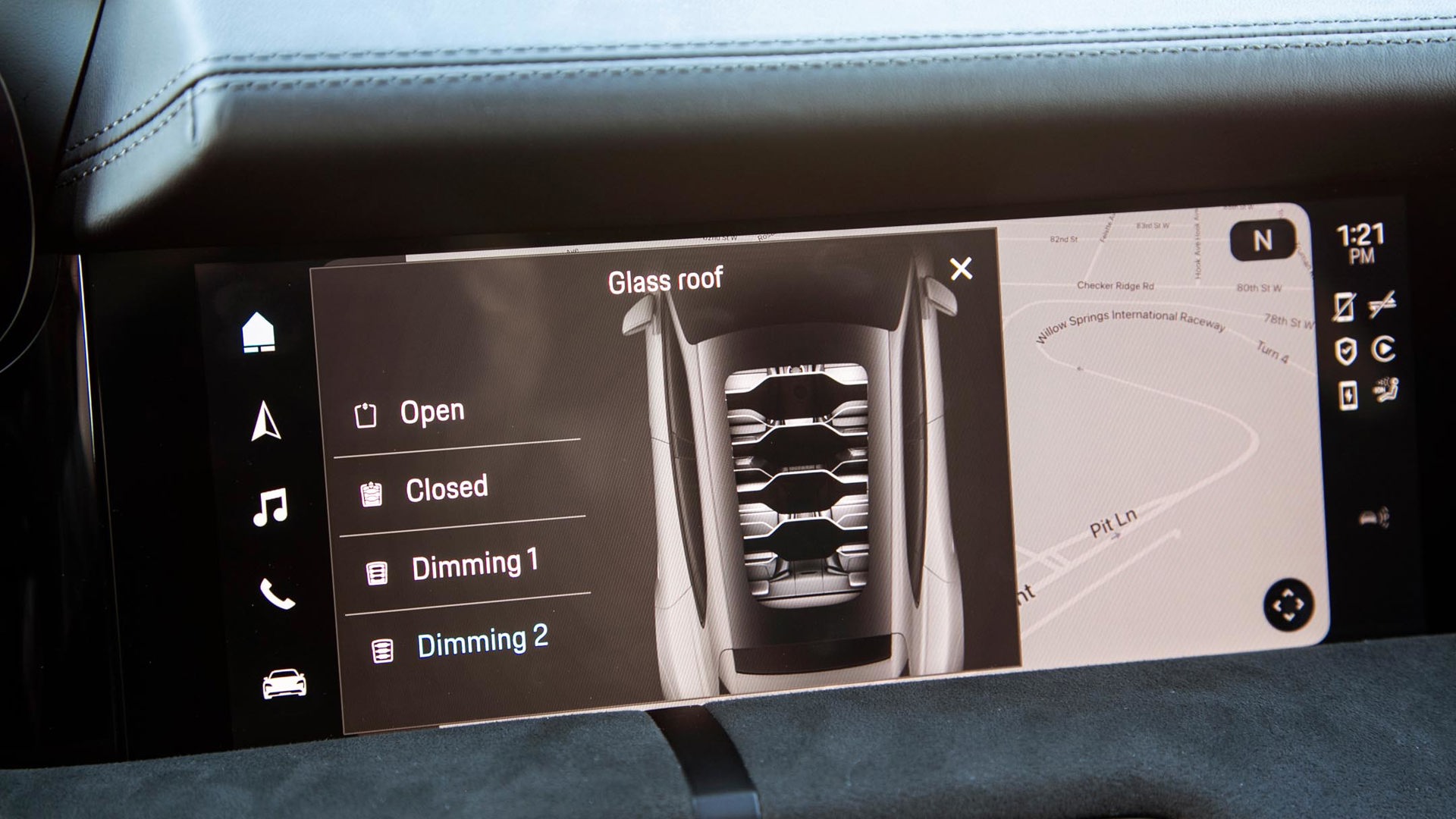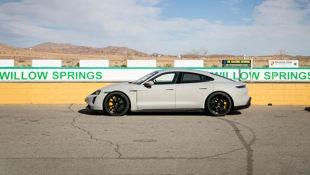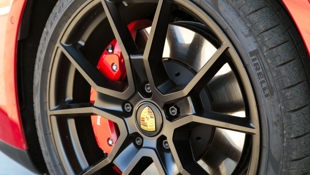Los Angeles – With a colossal wallop of instant torque that’s computer-optimized through all four wheels, contemporary high-end electric vehicles (EVs) can provide acceleration that’s absolutely dizzying. That sort of thrust is addictive, and being able to whirr away from a stoplight with such ferocity in almost complete silence is an experience that can make even the most die-hard combustion-engine enthusiast crack a grin behind the wheel of an EV.
But, too often, electric cars – even very costly and very fast ones like Tesla’s Model S – are sort of one-trick ponies in the performance realm. Sure, they’re fast, but they’re also heavy, resulting in sub-par handling and braking for such swift machines. It’s like a repeat of the 1960’s muscle cars that had plenty of straight-line gusto and a frightening lack of turning and stopping ability.
Porsche’s Taycan is the exception to the rule because it’s the first EV that’s equally at home commuting in traffic as it is pulling Gs on a racetrack.
Hitting the Sweet Spot
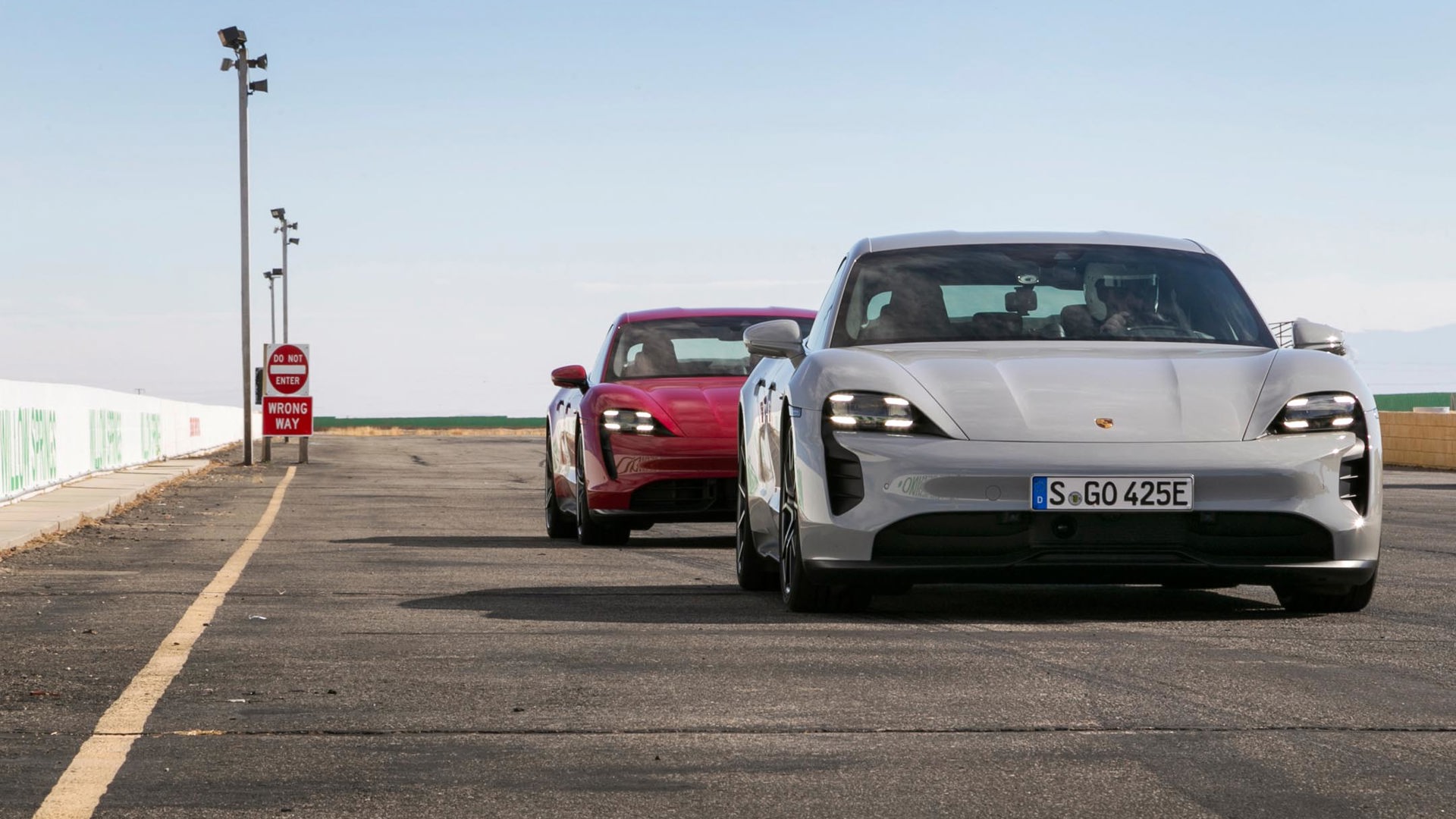
Launched for 2020, the Taycan is currently outselling Porsche’s own brand-defining 911 sports car. It’s a sensational success for the Stuttgart company, bringing in a larger number of female buyers to the showroom, but also younger buyers of all genders. More importantly, 50 per cent of the Taycans sold have gone to garages that didn’t already have a Porsche. It’s a new revenue stream that will also hopefully enable Porsche to continue making its fabulous flat-six sports cars for many years to come.
With the Taycan 4S starting at $121,700, and a fully optioned Taycan Sport Cross Turbo S cresting the $300,000 mark, there was a notable gap in the lineup that’s now filled with the new GTS models.
Over the past 18 years, Porsche started offering a GTS trim for each of its models, and it usually represents the sweet spot in the lineup, gaining many of the aesthetic and performance components of the much costlier Turbo models without the huge price leap. That’s exactly what’s happened here with the $150,100 Taycan GTS and $152,700 Taycan GTS Sport Turismo.
The latter shares the body shape with the Taycan Sport Cross, but without the pseudo-SUV pretenses, instead owning what it really is: a darned-sexy sport wagon. In terms of styling, the Taycan is a knockout in any form, but the GTS trim adds a standard Sport Chrono package and numerous blacked-out trim pieces, like the chin spoiler and Taycan Turbo-style rear diffuser. When optioned with the 21-inch RS Spyder Design wheels and finished in Carmine Red like my test car, it’s a stunning combination that received plenty of positive responses from passing motorists, even in Southern California where hot cars are a dime a dozen.
High-Tech, From Roof to Seat Bottom
The interior continues with the Taycan family’s glass-cockpit theme with screens for the primary gauges, infotainment system, and a touchscreen to operate most everything else. For an extra $1,280, the front-seat passenger can have their own screen in the dash, too. It’s a convoluted system that takes some time for the driver to memorize the location and operation of all the controls, but works well enough with some time invested.
The GTS’s seats and much of the dashboard are covered with a faux-suede material that looks and feels great. The standard front sport seats can be adjusted 18 ways and proved to be both comfortable for sitting in L.A. traffic, and supportive to hold a driver in place when exploring the car’s dynamic limits at Willow Springs Raceway. The rear seat can be specified for two- or three-person seating. In the Taycan sedan, it’s snug, especially in headroom, owing to the steeply raked roofline that gives the car its svelte profile, but the Sport Turismo’s wagon roofline allows for 91 millimetres of greater headroom, making it a decently comfortable place for a pair of adults.
Porsche has also introduced a new liquid-crystal Panoramic Light Control roof option for the GTS that transforms from fully transparent to fully opaque – or with up to nine individually controlled panels – at the touch of a button.
The Sport Turismo improves the cargo capacity from the sedan’s 407 L to 446 L, expandable to 1,212 L with the split seat folded. Both sedan and Sport Turismo offer an additional 84-litre front cargo hold as well.
An EV With Dancing Shoes
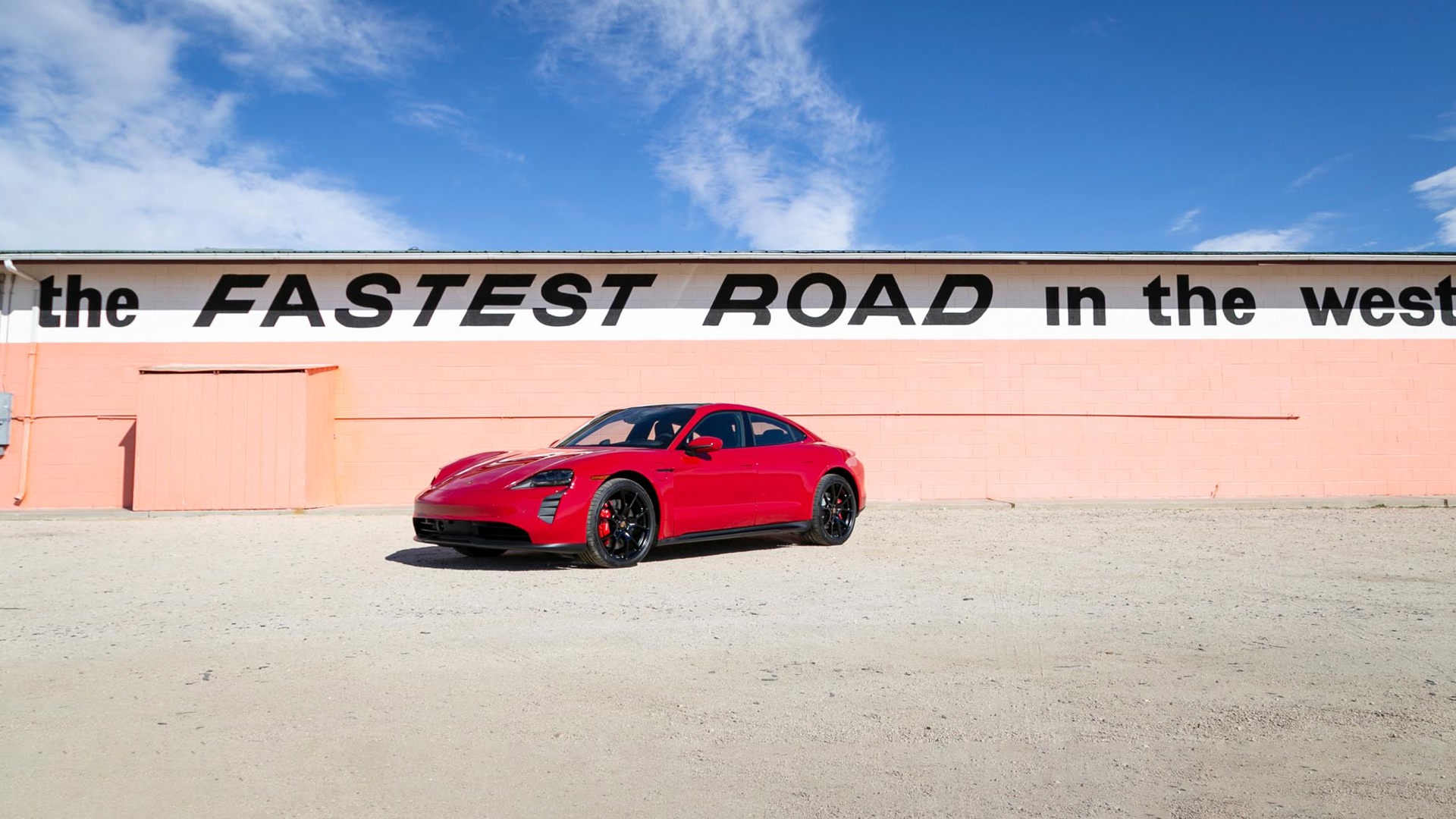
The Taycan GTS models look the part, but can they live up to their sporty appearance? Absolutely. Setting out from downtown Los Angeles, I found myself on the legendary Angeles Crest Highway, with the Sport Plus drive mode selected and the bright red wagon attacking the relentless flow of corners with utterly unflappable composure.
Many all-wheel-drive cars with big, sticky tires can cling to the road with tenacity, but the Taycan GTS makes the art of driving quickly the sort of fun I never imagined possible from an electric car. The steering is nicely weighted, offering great feel, quickness, and an immediacy to turn-in that’s lacking on most modern sports cars, never mind EVs. Porsche gives the GTS its adaptive air suspension with the Porsche Active Suspension Management (PASM) system tuned specifically for the GTS, said to be 20 per cent stiffer than the Taycan Turbo’s. At 2,300 kg, the Taycan GTS isn’t a flyweight, yet its tidy dimensions and low centre of gravity means that the Porsche carries its weight well, managing to feel like a smaller, lighter car than it is, especially when driven hard.
My mountain-strafing Sport Turismo GTS was fitted with the optional Porsche Dynamic Chassis Control Sport system that helps keep the car planted, even when the pavement conditions aren’t ideal. While the highway roads were in great shape, the track surface at Willow Springs offered more bumps than expected, enabling a crystal-clear demonstration of just how brilliantly Porsche’s engineers have tuned the Taycan GTS. Big Willow’s downhill, left-hand Corner 5 has enough of a hump in it that at speed, would upset many lesser cars. The Taycan GTS managed it without breaking stride before rocketing toward the very fast Corners 6 and 7.
The ceramic composite brakes are an upgrade costing more than $10,000, but their fade-free braking power in the mountains and on the track meant that the Taycan’s prodigious power can be reined in whenever needed – even in a big hurry.
On paper, the Taycan GTS’s 509 hp might seem wildly overshadowed by the Turbo’s 616 hp (or 670 hp with overboost), but the GTS also has an overboost function that tops it up to 590 hp and, more importantly, the GTS’s 626 lb-ft of torque matches the Turbo’s figure. The net result is a whiplash-inducing rip from zero to 100 km/h in 3.7 seconds, only a few tenths of a second behind the Turbo. The front motor is common across the Taycan lineup, while the GTS shares the Turbo’s rear motor, confirming that the power output is simply a state of digital tune.
What’s more, the weight penalty of the Sport Turismo’s wagon-butt is so minimal that it has no effect on straight-line performance. The addictive nature of that sort of thrust, whether pulling away from a stop light, or rocketing out of a turn on the track cannot be overstated, and the electronically generated sport sounds (tuned to be more present in the GTS) genuinely contribute to the fun of this car.
AWD for Fun, RWD for Range
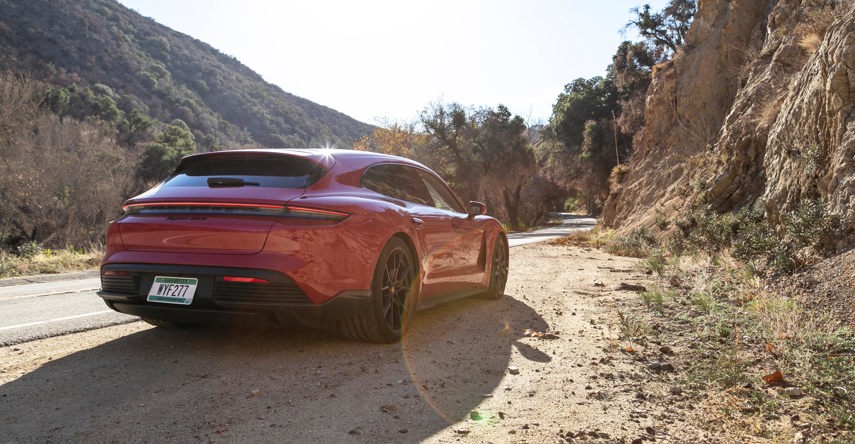
Despite enjoying my limited time with the Taycan GTS in the mountains to its fullest (meaning with a very heavy foot), the Porsche delivered remarkable battery range. There’s no official rating yet, but despite several hours and a few hundred kilometres of aggressive driving in Sport and Sport Chrono modes (switching only to Range mode when cruising on the highway), the Sport Turismo was still showing more than 50 km of remaining range when I rolled into a Burbank fast charger station.
The Taycan GTS is rated for charge speeds at Level 3 chargers of up to 275 kW under ideal circumstances that include an optimally functioning charger. Still, we saw speeds of up to 255 kW for a decent portion of the charge, helping the Taycan’s battery go from less than 5 per cent to over 80 per cent in little more than the time it took to for a quick bathroom break and to share a few brief pleasantries with other EV drivers at the charge station.
With a generous but not always realistic European range rating of 507 km (it hasn’t yet been officially rated for North America), the Taycan GTS offers the greatest range in the lineup, although much of that is due to a change to Range mode that decouples the front motor. The decoupling option will also be introduced on other 2022 Taycan models and is claimed to add up to 22 km of range.
A Porsche Through and Through

For many driving enthusiasts, the transition to an electrified automotive world has been a worrying one, founded in the belief that there’s no way an EV could provide a legitimately sporting experience. The Porsche Taycan GTS sedan and Sport Turismo models are proof that an electric car can be a more sustainable option that gives up nothing in performance on the road or even the track.
The 2022 Porsche Taycan GTS will arrive in Canada in spring 2022.
